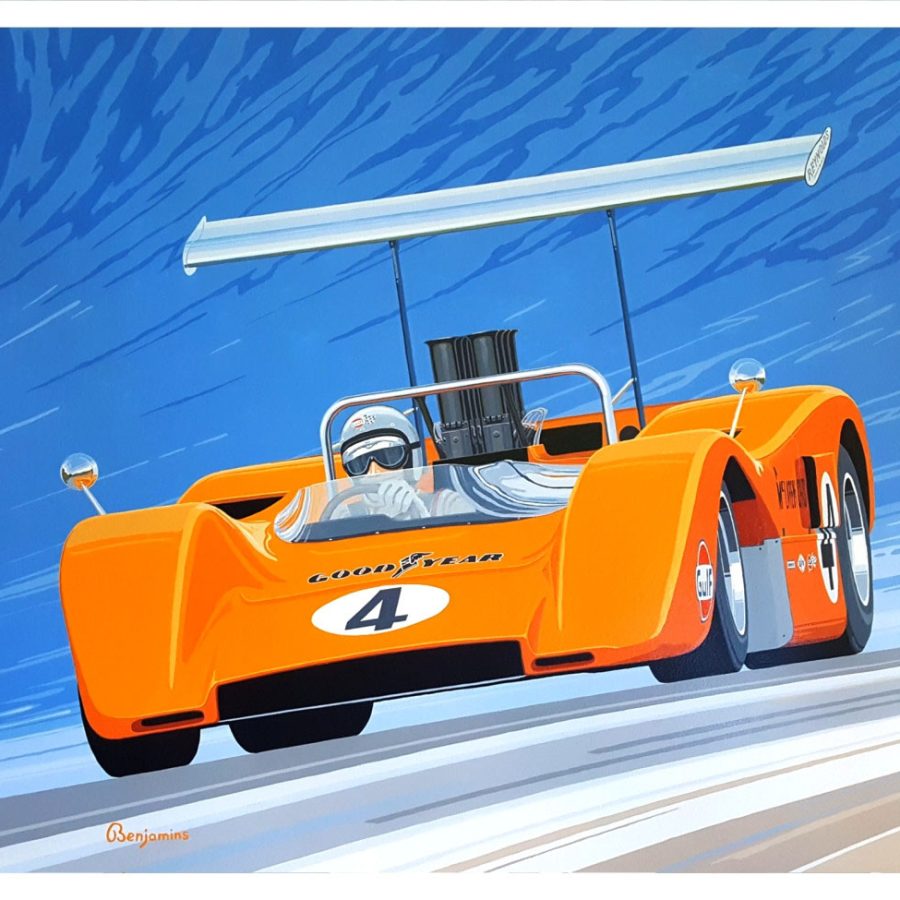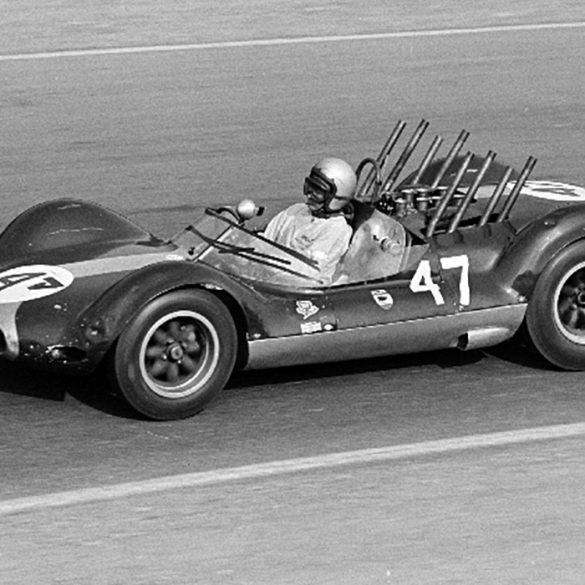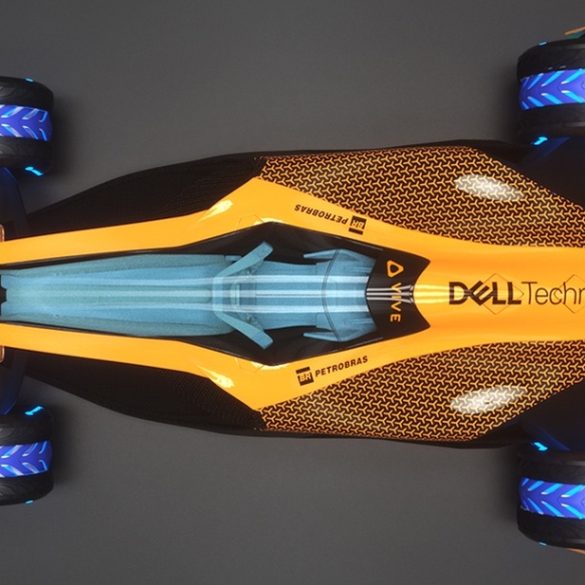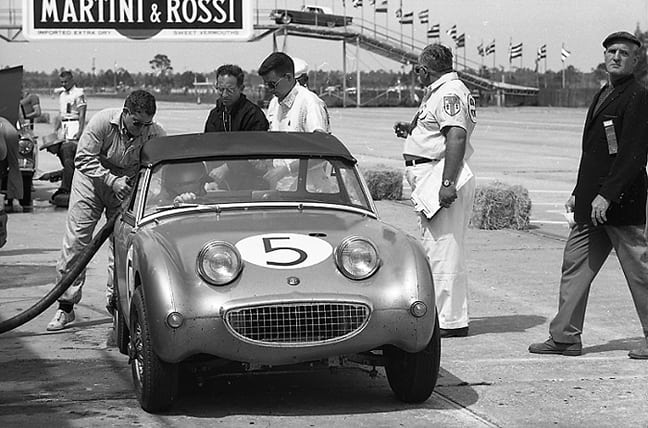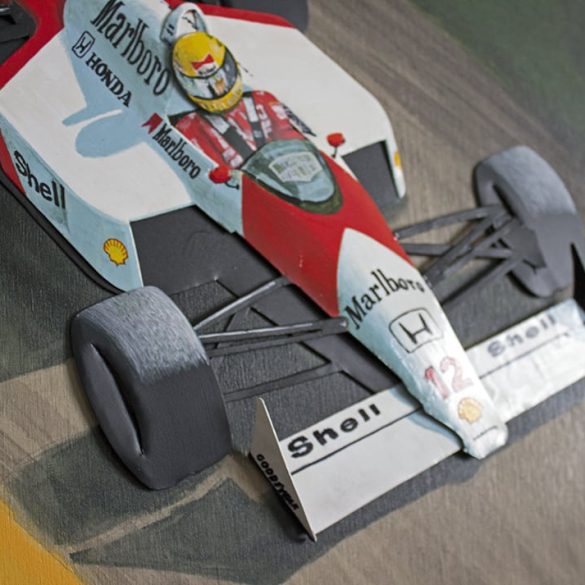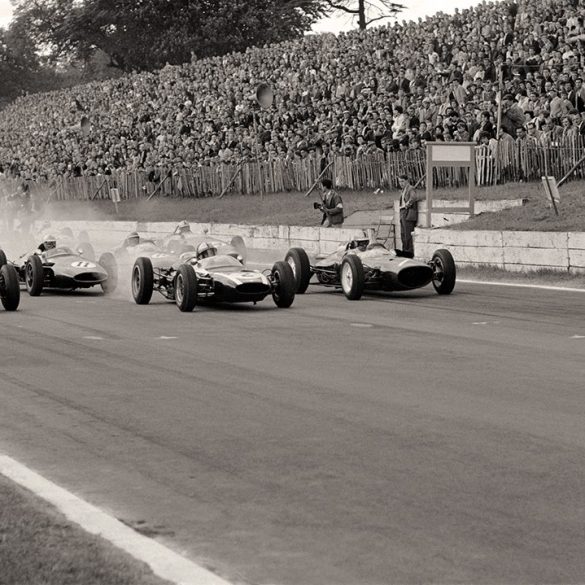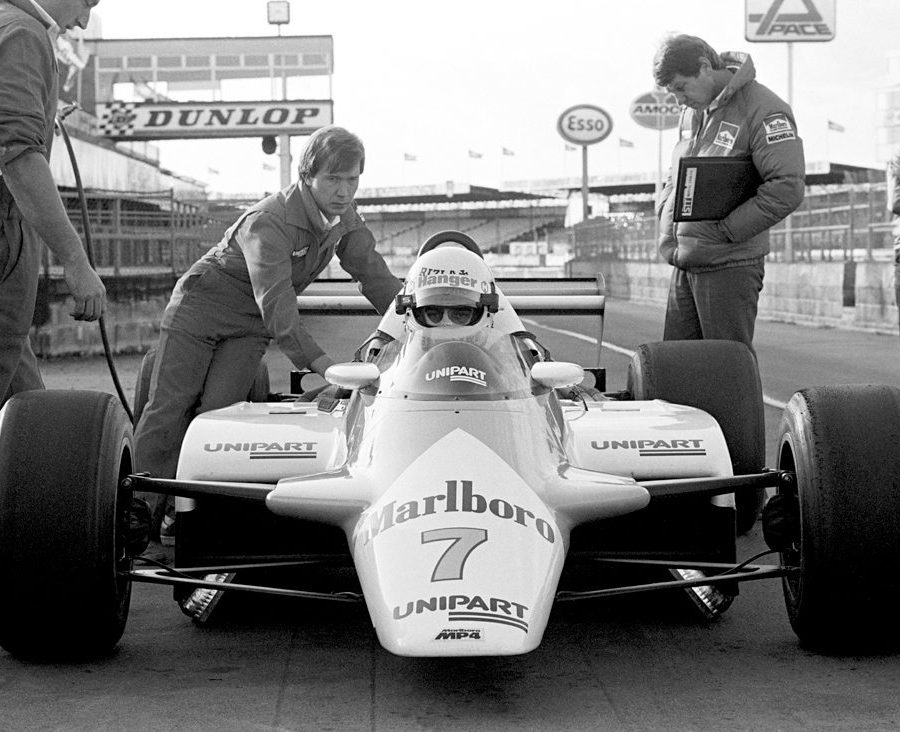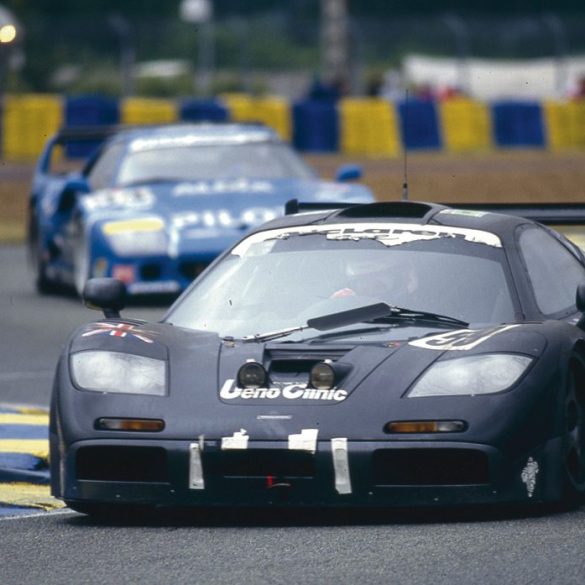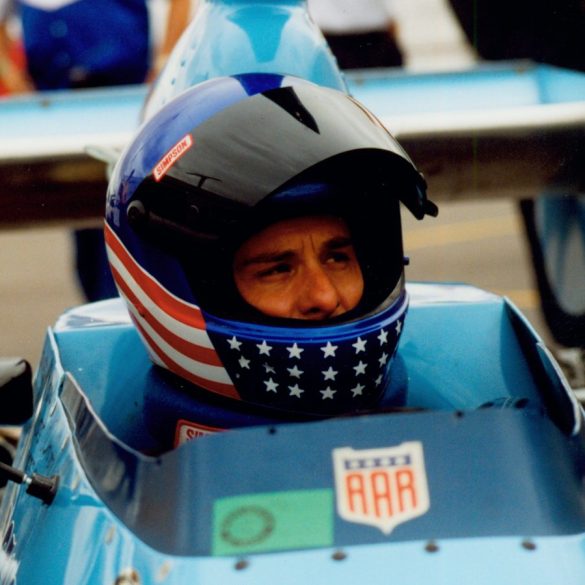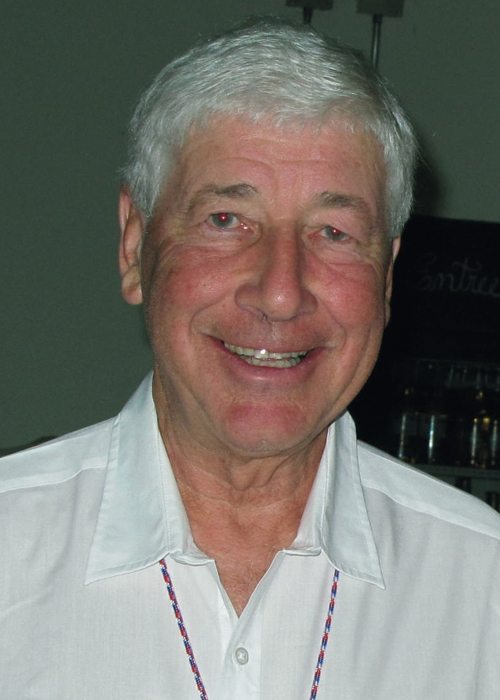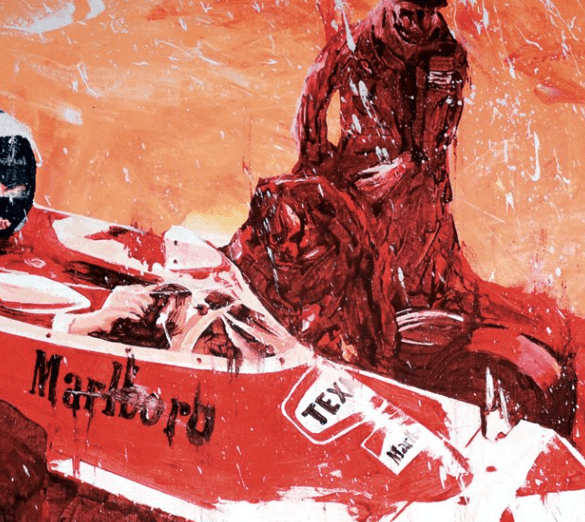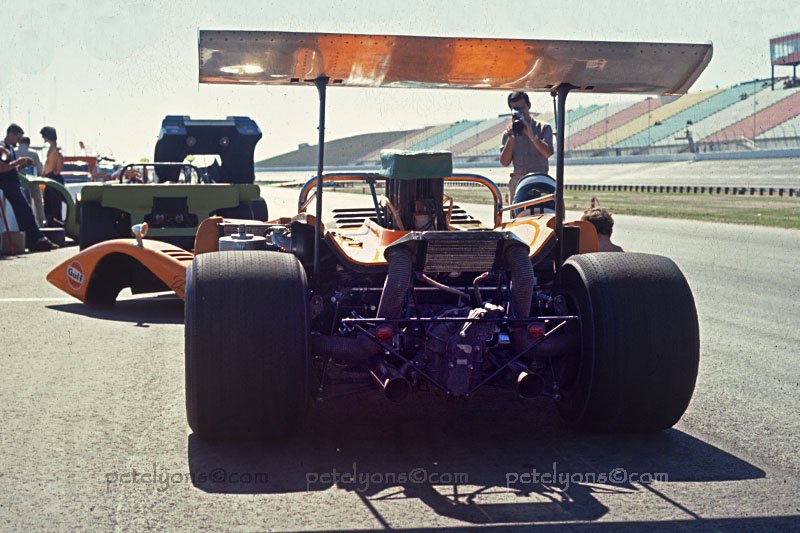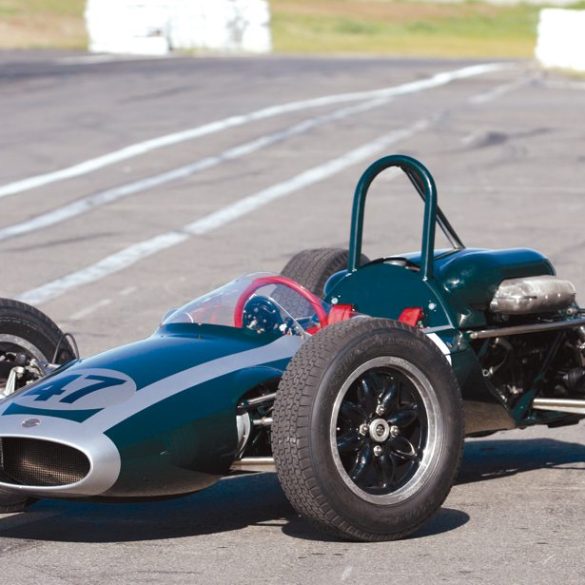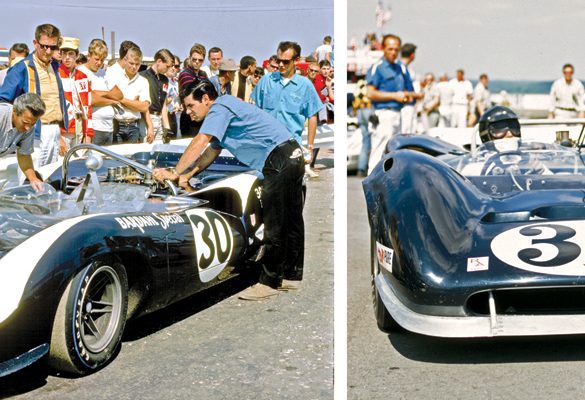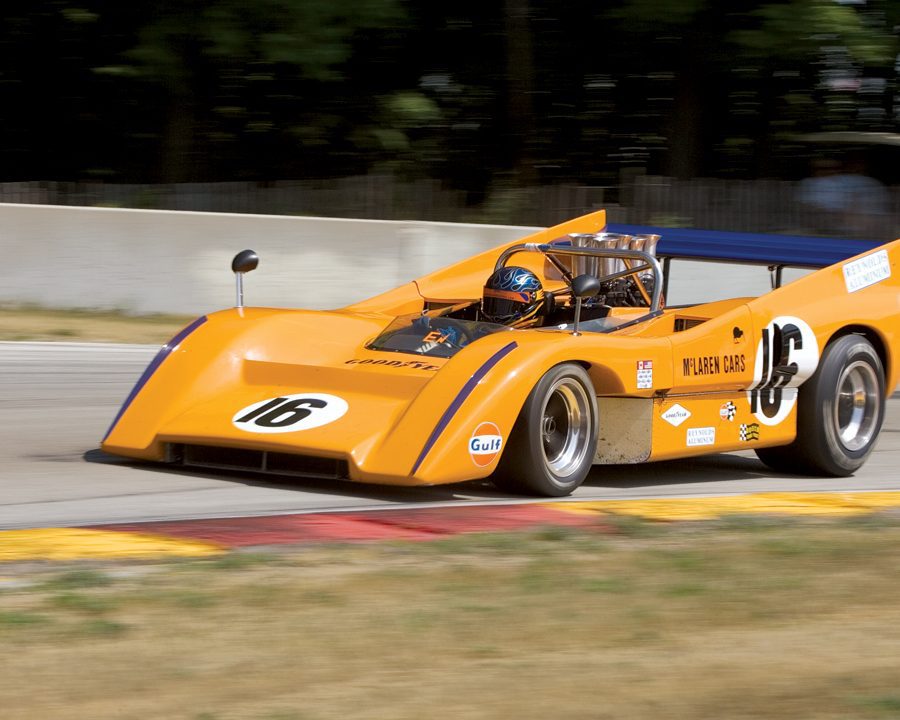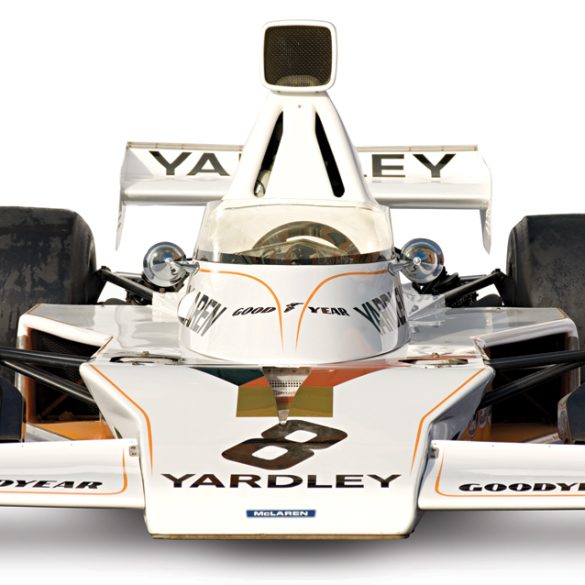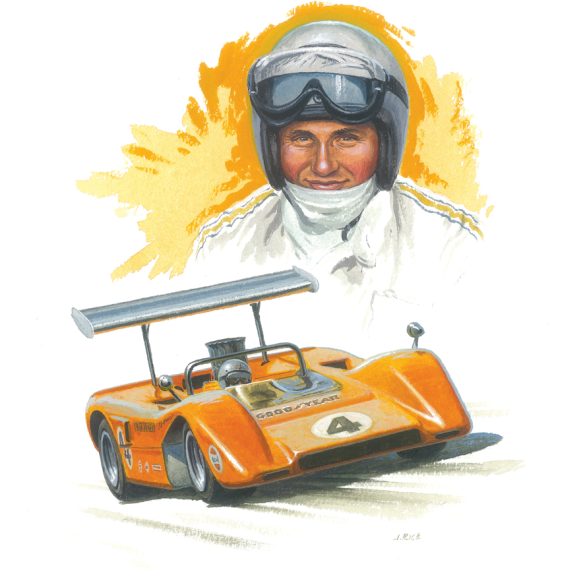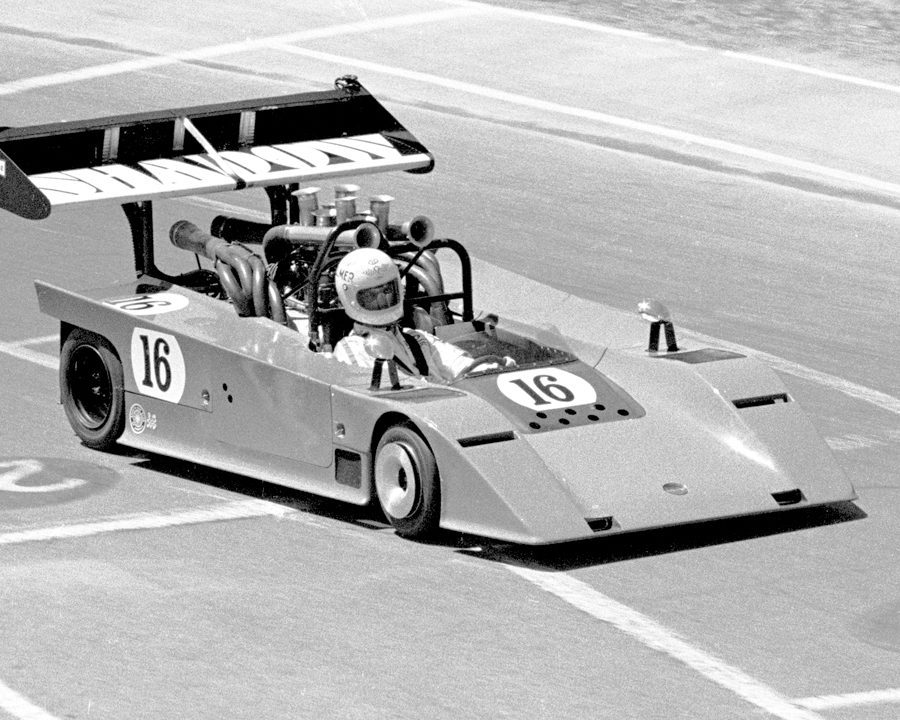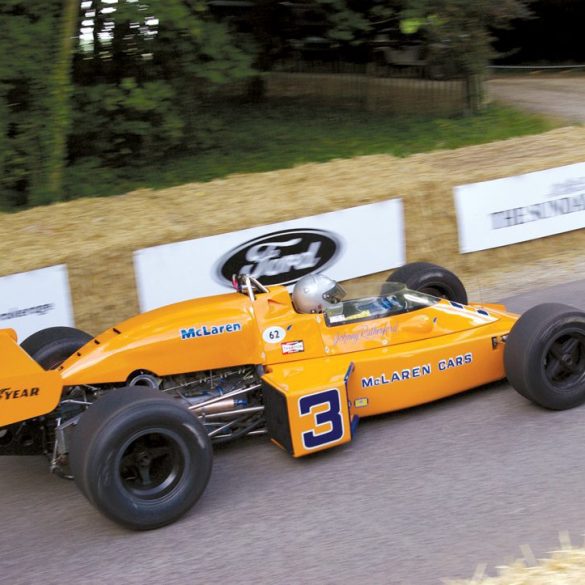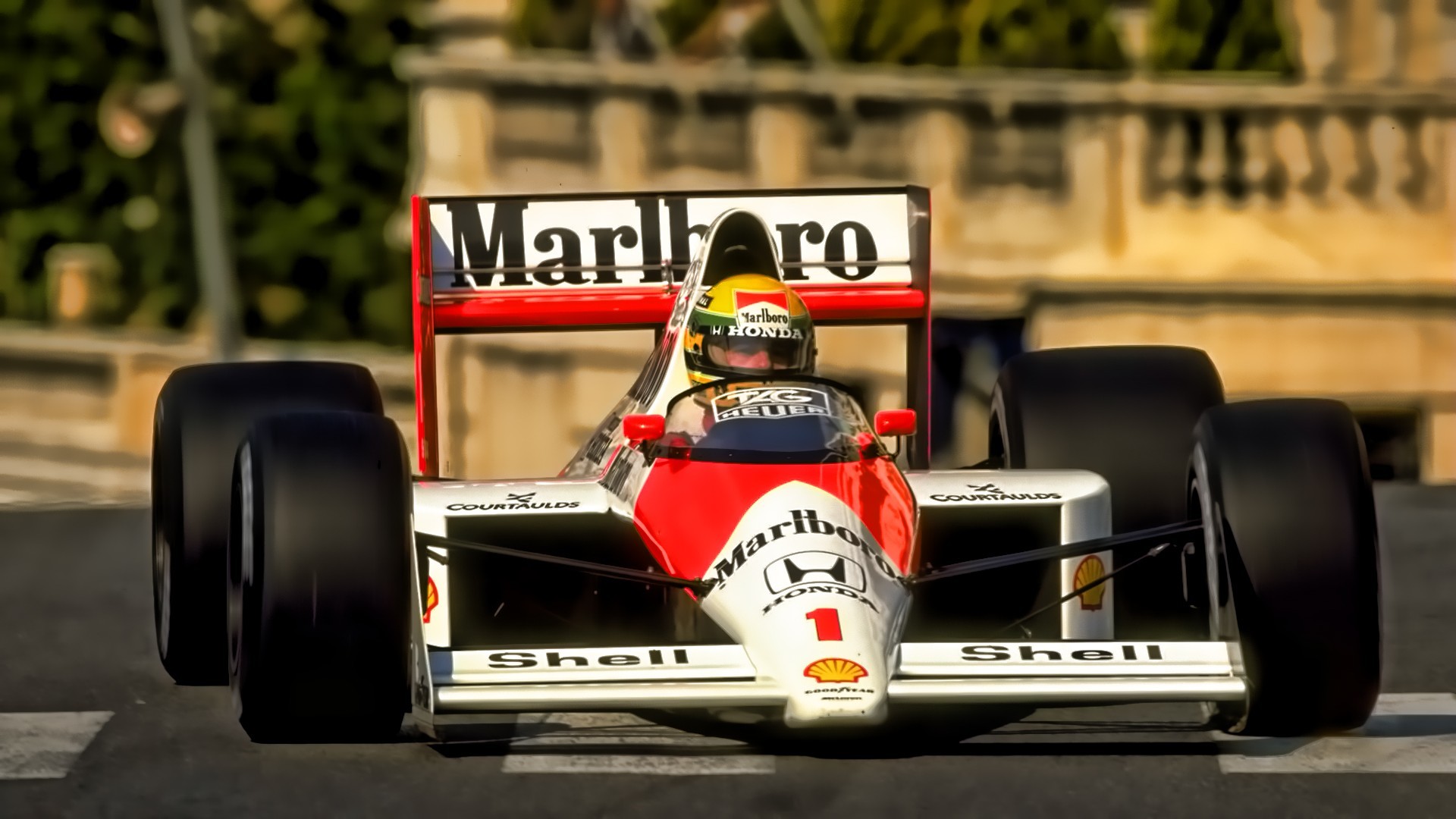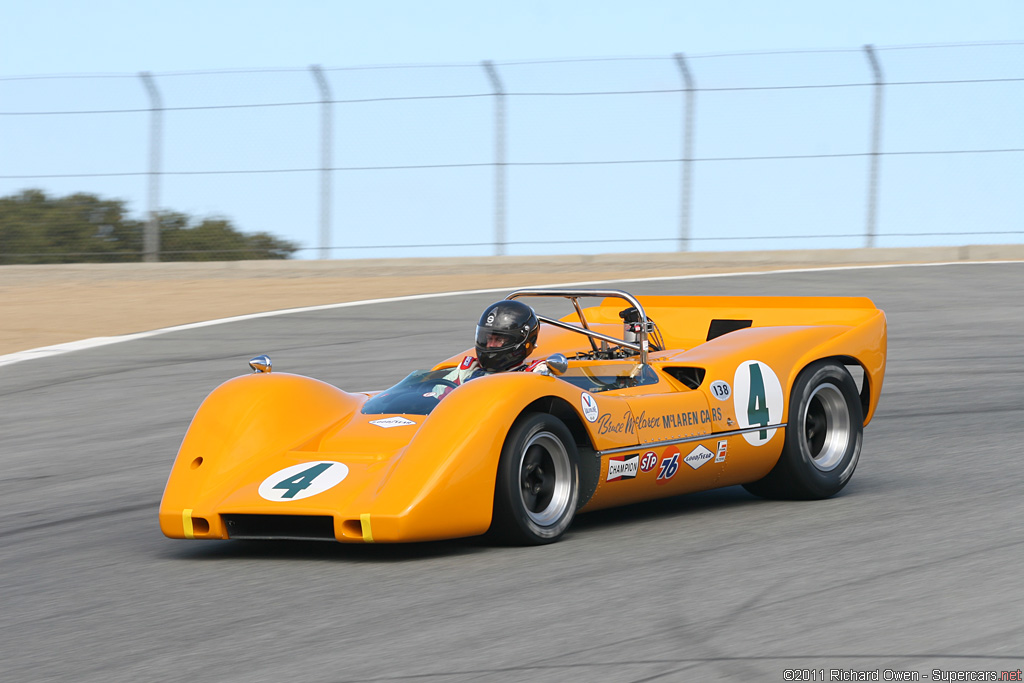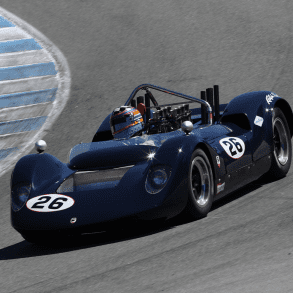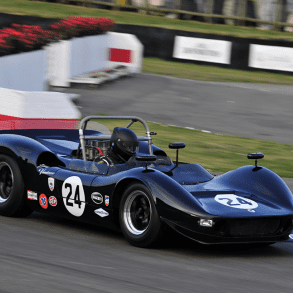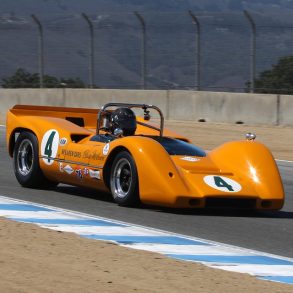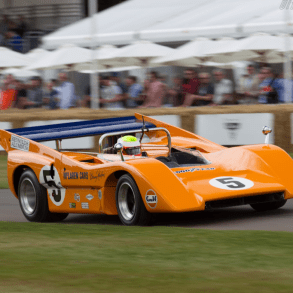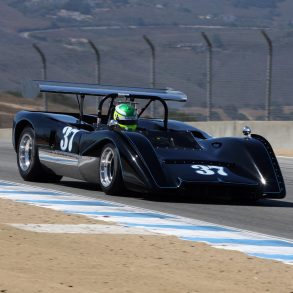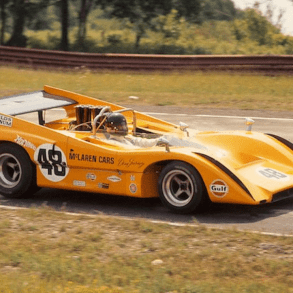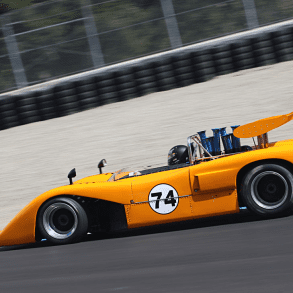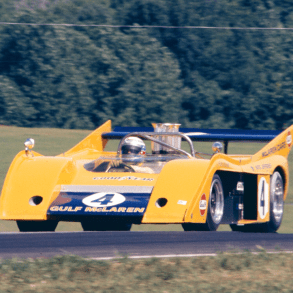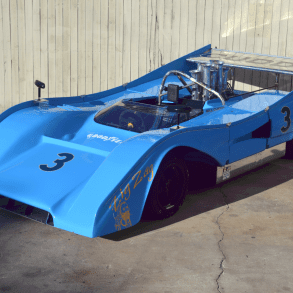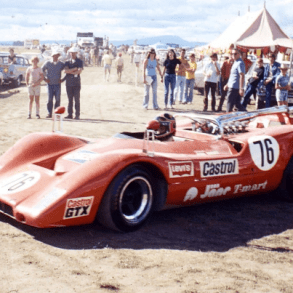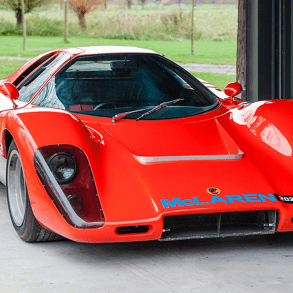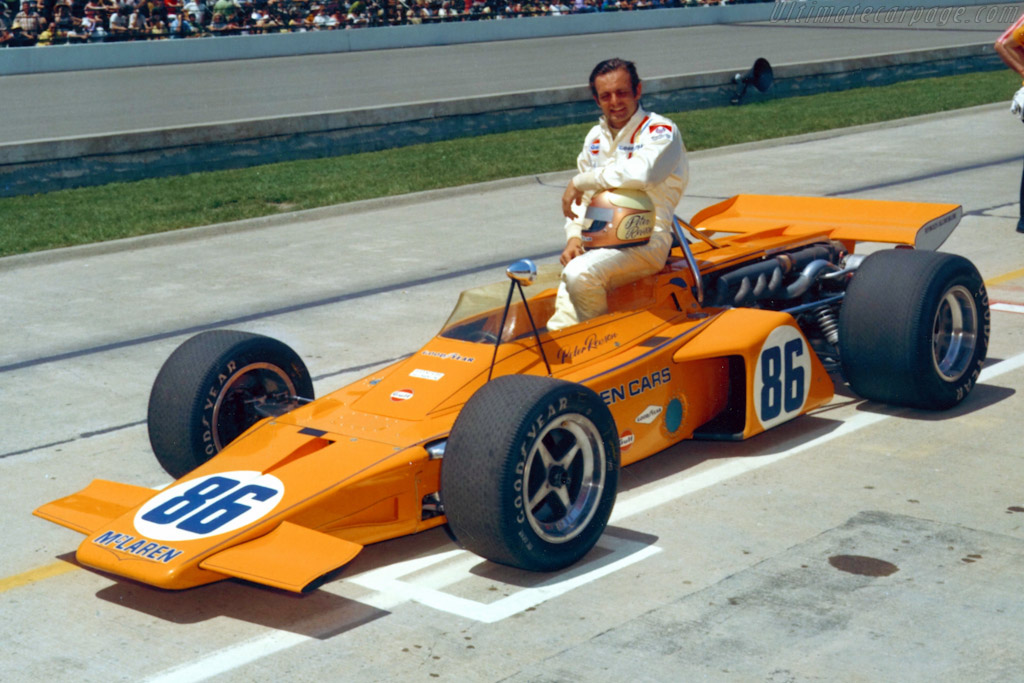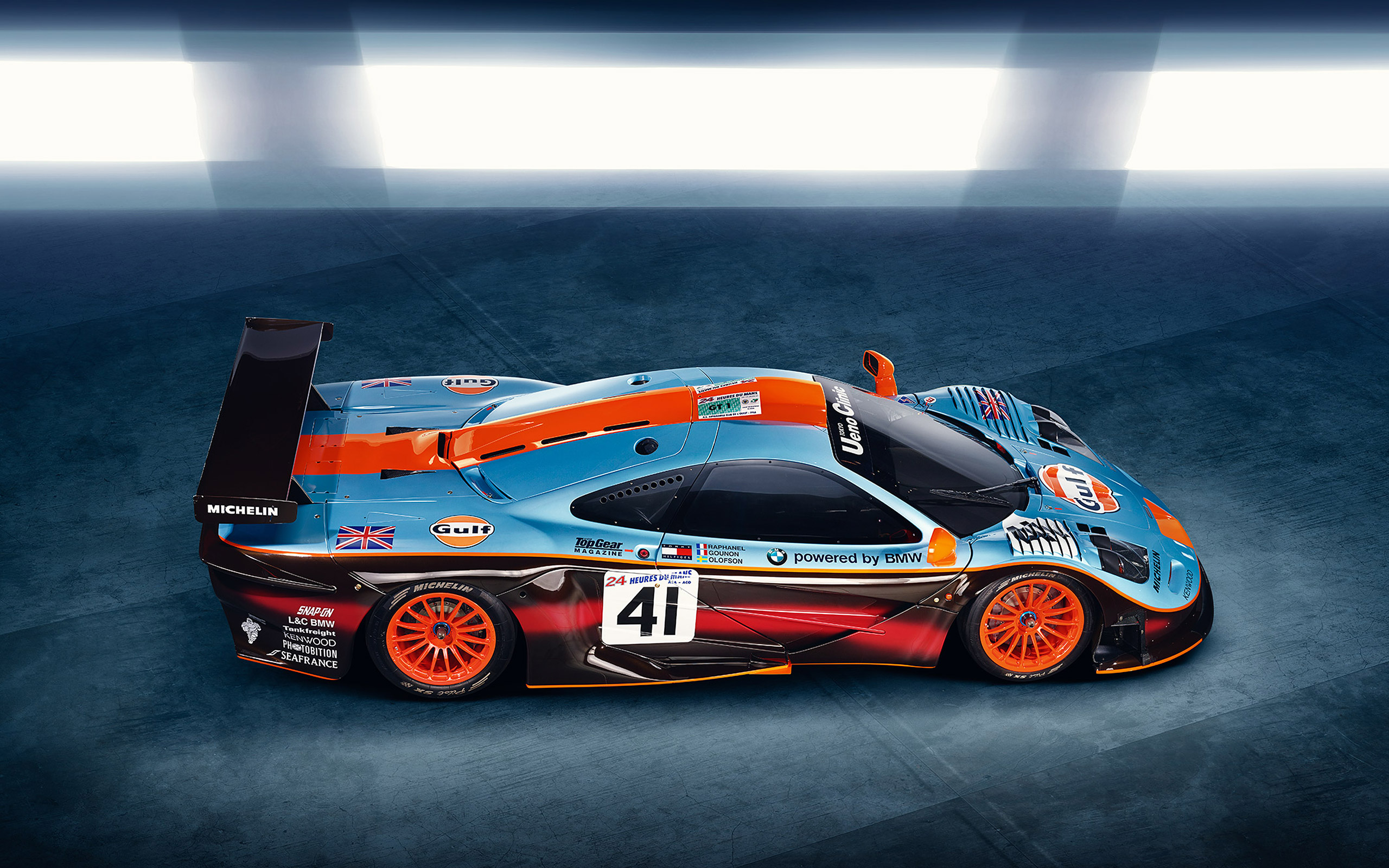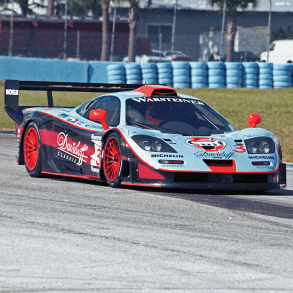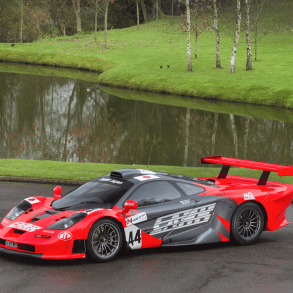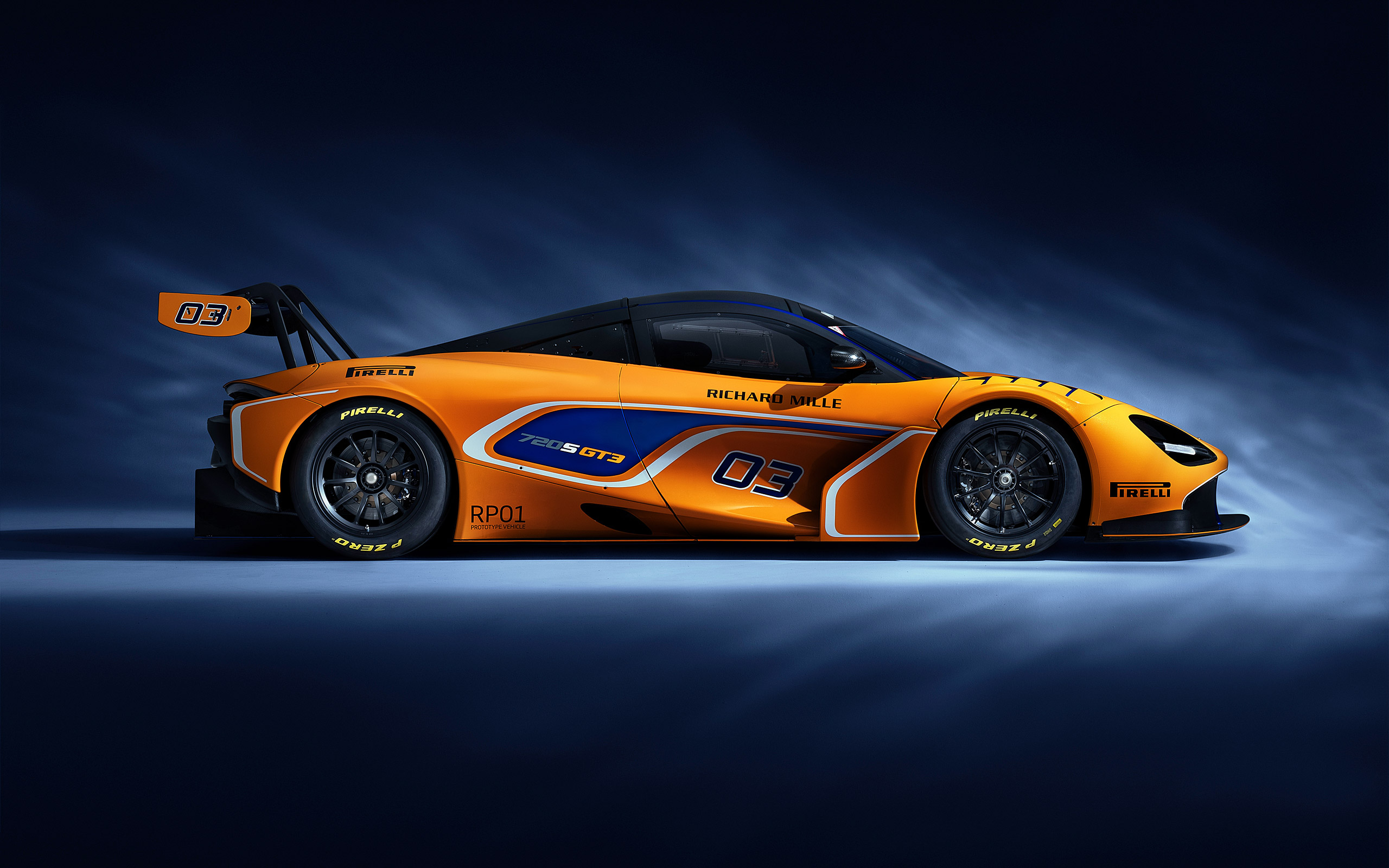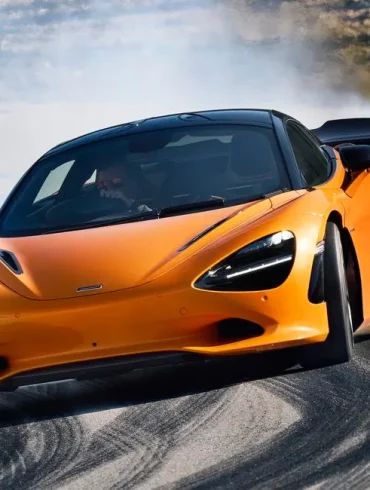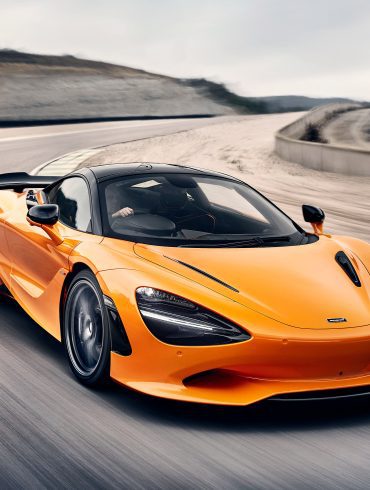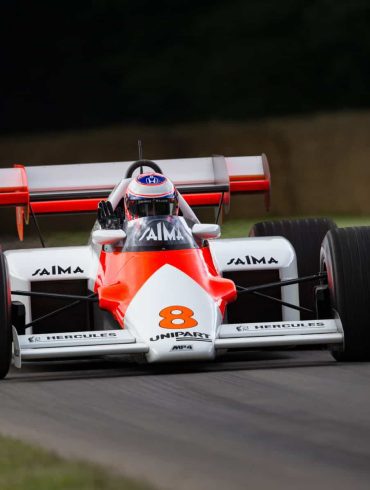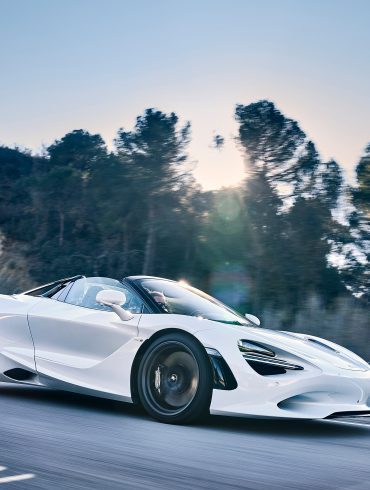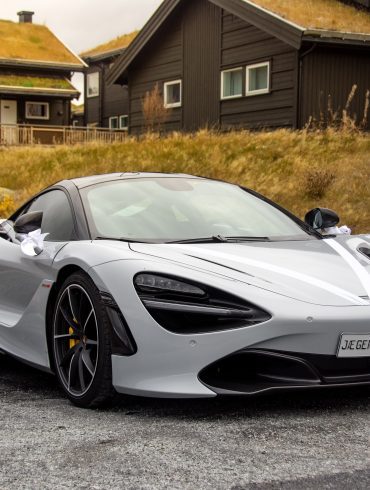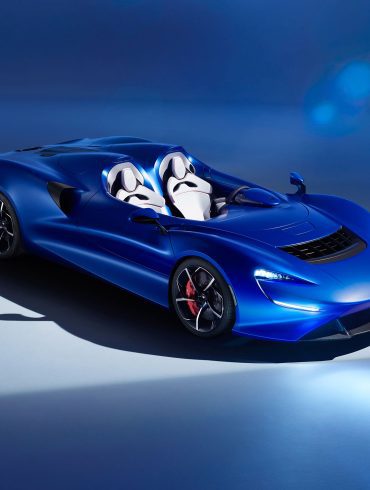McLaren Race Cars
McLaren has built cars that consumers can buy and race for a long time. The pace of new GT car development has really picked up in recent years along with the broader McLaren production range, but there are some cracking cars from the 1990s that were absolutely dominant when it came to racing. The older McLaren race cars no longer in production can still be found pounding race tracks all over the world and continue to win races with customer teams in championships globally.
The Stories / Formula One / Can-Am / IndyCar / LeMans F1 / Customer Racing / Best McLaren Racecars
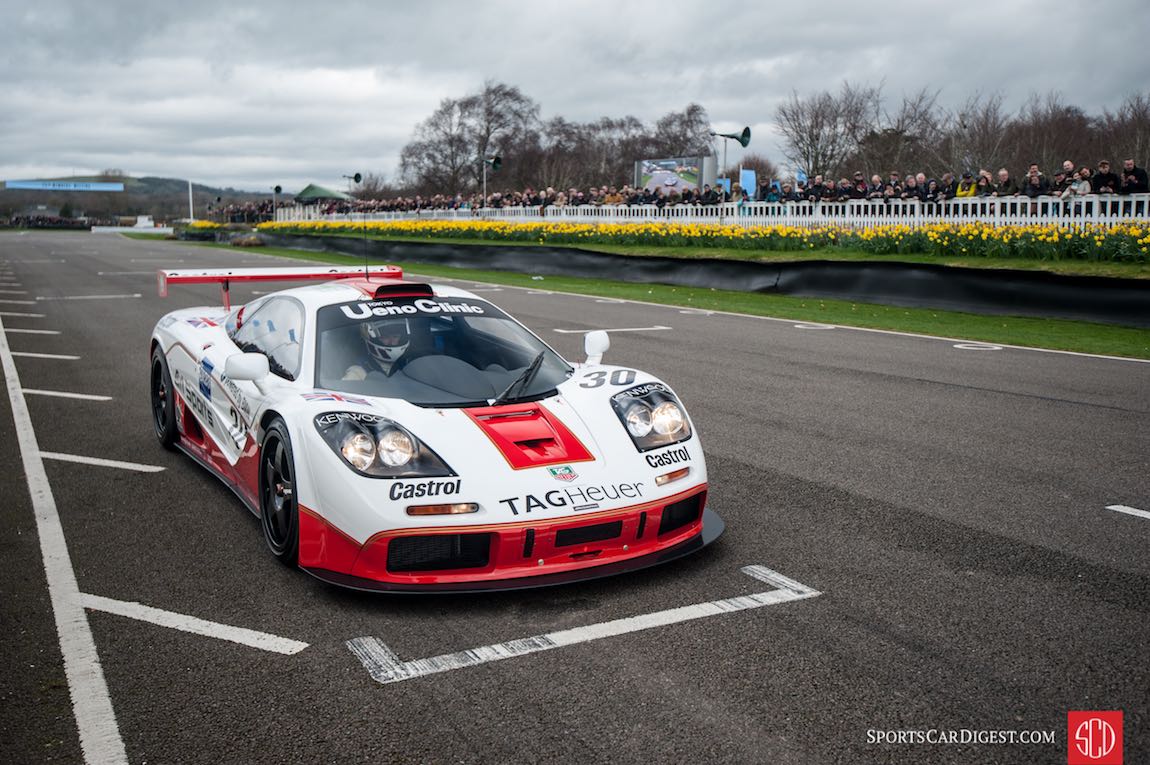
Every McLaren Race Car Ever Made
McLaren's involvement in motorsports is not just a part of its history; it is the very foundation upon which the company was built. Founded in 1963 by New Zealand-born racer Bruce McLaren, the McLaren Racing team debuted in the Formula One World Championship in 1966. Since then, McLaren has become synonymous with success and innovation in one of the most competitive sports in the world. Bruce McLaren's racing philosophy was simple yet ambitious: to design, build, and race cars that were better than any before them. From the very beginning, McLaren was at the forefront of innovation. The team's first significant success came in 1968 when Bruce himself won the Belgian Grand Prix in a McLaren car, marking the team's first Formula One victory.
The 1980s and early 1990s were a golden era for McLaren in Formula One. Under the leadership of Ron Dennis, McLaren embraced cutting-edge technology and design. The team's collaboration with Porsche to develop the TAG turbo engine and later with Honda resulted in some of the most dominant cars in the history of the sport. Legendary drivers like Ayrton Senna, Alain Prost, and Niki Lauda drove McLaren to multiple championship wins. During this period, McLaren won 12 drivers' championships and 8 constructors' championships, cementing its legacy as one of the most successful teams in Formula One.
Beyond Formula One, McLaren has expanded its racing efforts into other areas of motorsport. McLaren cars have competed in the Indianapolis 500, Can-Am, and Le Mans, often with great success. In recent years, McLaren has made a significant impact in the GT racing scene, with its range of sports cars adapted for competitive racing. The introduction of the McLaren GT division marked a new chapter, focusing on making McLaren a staple in endurance racing and GT3 competitions worldwide. Cars like the 720S GT3 and the 570S GT4 have shown McLaren's commitment to competing across various platforms of motorsport, promoting both brand prestige and technological advancement.
McLaren Formula 1 Cars
McLaren is the second-oldest active Formula 1 team and if you have been following their race team for more than five seasons, they have actually been pretty successful at the sport, with some of the most iconic and successful Formula 1 cars ever made. Founded in 1963 by Bruce McLaren, the team continues to build on a long and successful history in F1. Back in 1968, Bruce McLaren won in Belgium, giving a first Grand Prix victory to his team, who finish second in the constructors' championship that year. In 1976, James Hunt takes the drivers' championship for the team, beating Ferrari's Niki Lauda by one point.
Dominance came in the 1980s, when partnering Alain Prost, Niki Lauda took the drivers' championship by half a point from his team mate as they won 12 of the season's 16 races in 1984. The next year, Prost wins again for back to back honors. Then between 1988 and 1991, McLaren dominated. In 1988 Ayrton Senna took the title from his team mate Alain Prost, with honors reversed in 1989. In 1990 Senna takes back the title and retains it in 1991. The rule changes in the late 1990s allowed Mika Hakkinen to take the drivers' championship in both seasons with McLaren taking the constructors' championship in 1998.
While competitive thereafter, it wasn't till 2007 that true success came back. Despite a rivalry between Hamilton and Alonso, McLaren won eight Grands Prix but were stripped of constructors' points and fined $100 million for benefiting from possession of confidential Ferrari data. Hamilton and Alonso finish level on points - one shy of the drivers' title. In 2008 Lewis Hamilton brings team their first drivers' championship since 1999, but partnership with Heikki Kovalainen ultimately not strong enough to wrest constructors' crown from Ferrari and they finish second, 21 points shy of the Italian team. Since then there have been ups and downs.
McLaren Formula One Car List
McLaren M2B (1966)
McLaren M4B (1967)
McLaren M5A (1967 - 1968)
McLaren M7A (1968 - 1971)
McLaren M7B (1969)
McLaren M7C (1969)
McLaren M7D (1970)
McLaren M9A (1969)
McLaren M14A (1970 - 1971)
McLaren M14D (1970)
McLaren M19A (1971)
McLaren M19C (1972 - 1973)
McLaren M23 (1973 - 1977)
McLaren M26 (1976 - 1978)
McLaren M28 (1979)
McLaren M29 (1979 - 1980)
McLaren M30 (1980)
McLaren MP4/1 (1981 - 1983)
McLaren MP4/2 (1984 - 1986)
McLaren MP4/3 (1987)
McLaren MP4/4 (1988)
McLaren MP4/5 (1989 - 1990)
McLaren MP4/6 (1991 - 1992)
McLaren MP4/7A (1992)
McLaren MP4/8 (1993)
McLaren MP4/9 (1994)
McLaren MP4/10 (1995)
McLaren MP4/11 (1996)
McLaren MP4/12 (1997)
McLaren MP4/13 (1998)
McLaren MP4/14 (1999)
McLaren MP4/15 (2000)
McLaren MP4-16 (2001)
McLaren MP4-17 (2002)
McLaren MP4-18 (2003)
McLaren MP4-19 (2004)
McLaren MP4-20 (2005)
McLaren MP4-21 (2006)
McLaren MP4-22 (2007)
McLaren MP4-23 (2008)
McLaren MP4-24 (2009)
McLaren MP4-25 (2010)
McLaren MP4-26 (2011)
McLaren MP4-27 (2012)
McLaren MP4-28 (2013)
McLaren MP4-29 (2014)
McLaren MP4-30 (2015)
McLaren MP4-31 (2016)
McLaren MCL32 (2017)
McLaren MCL33 (2018)
McLaren MCL34 (2019)
McLaren MCL35 (2020)
McLaren MCL35M (2021)
McLaren MCL36 (2022)
McLaren MCL60 (2023)
McLaren MCL38 (2024)
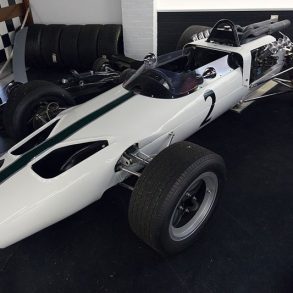
McLaren M2B
Season: 1966
The McLaren M2B was the McLaren team's first Formula One racing car, used during the 1966 season. Entering six races and starting only four. It scored the team's first point at the British Grand Prix and two more points at the United States Grand Prix.
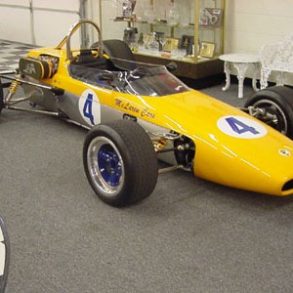
McLaren M4B
Season: 1967
Raced five times by Bruce McLaren in the 1967 season, the M4B was based on the M4A Formula 2 car as a stopgap between the M2B and the M5A. Additional fuel tanks were added either side of the cockpit to allow the car to run a full Grand Prix distance.
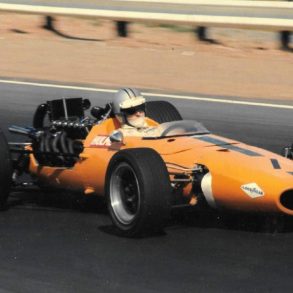
McLaren M5A
Season: 1967 - 1968
McLaren's first car build specifically for Formula One. In all it has eleven races for now wins. Swedish privateer Jo Bonnier bought the M5A and used it to take part in 7 more Grands Prix in 1968, as well as other races including the International Trophy..
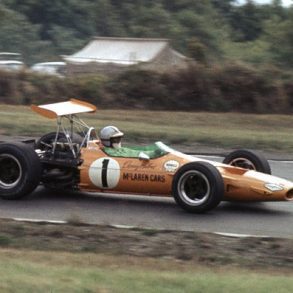
McLaren M7A
Season: 1968 - 1971
The Lotus 21 had a tubular spaceframe structure skinned with fibreglass panels. Used by the works Lotus team, the 21 was the first works Lotus to win a Formula One Grand Prix.
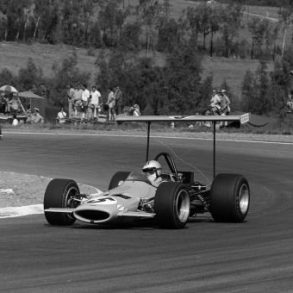
McLaren M7B
Season: 1969
The M7B was a one-off conversion of an M7A chassis with the fuel stored low and centrally in integral tanks at the sides of the cockpit. This was another result of Bruce McLaren's theory about improving the car's handling by altering fuel weight distribution.
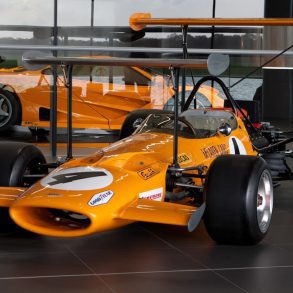
McLaren M7C
Season: 1969
The chief distinguishing characteristic of M7C was its fully enclosed monocoque which gave greater torsional rigidity than the bathtub chassis.
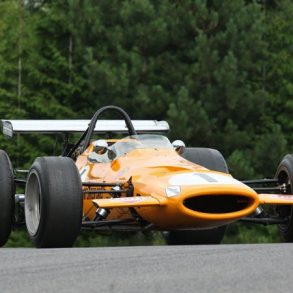
McLaren M7D
Season: 1970
The M7D was commissioned by Alfa Romeo's Autodelta competition department and was powered by a 3.0 litre V8 engine from Alfa Romeo's T33 sports car. Its record in F1 was pretty horrible.
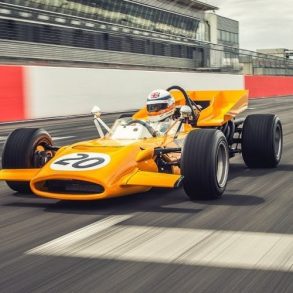
Mclaren M9A
Season: 1969
Like Lotus and Matra, McLaren built a four-wheel-drive F1 car for 1969, the McLaren M9A, but the car was only raced once and then put aside. The car, complete with distinctive "tea tray" rear wing, was completed in time for Derek Bell to use in the British Grand Prix along the M7s.
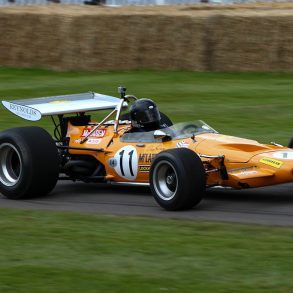
McLaren M14A
Season: 1970 - 1971
The M14A was an evolution of the previous M7A and M7C, with the primary change being the rear brakes were mounted inboard instead of outboard. As with the M7, the M14A was powered by a Cosworth DFV V8 and a Hewland 5-speed manual .
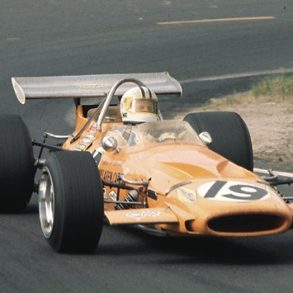
McLaren M14D
Season: 1970
Like the M7D, the M14D was commissioned by Alfa Romeo's Autodelta competition department. It was a standard M14A powered by the 3.0 litre V8 engine from Alfa Romeo's T33 sports car.
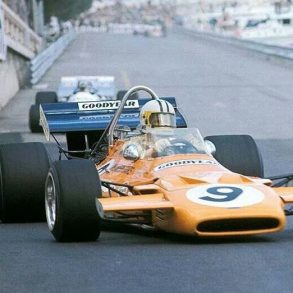
McLaren M19A
Season: 1971
Nicknamed "The Alligator Car" thanks to the two fuel tanks next to the driver, the M19A used inboard coilover shocks for the front and rear suspension. Used a mid-mounted Cosworth DFV V8 and Hewland 5-speed manual gearbox.
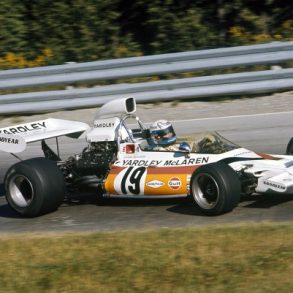
McLaren M19C
Season: 1972 - 1973
The modified M19C made its debut at Monaco in the hands of Denny Hulme (Revson/Redman kept the M19A until the Austrian Grand Prix). The swinging link connection was dropped in favor of a conventional system in the M19C.
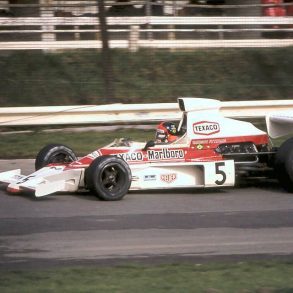
McLaren M23
Season: 1973 - 1977
The M23 was a development of the McLaren M16 Indianapolis 500 car. A Ford Cosworth DFV engine was used and in the hands of Nicholson-McLaren Engines it made around 490 bhp. Over 83 races it had 14 poles, 16 wins, 2 drivers' championships and 1 constructors championship.
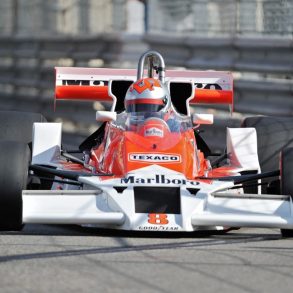
McLaren M26
Season: 1976 - 1978
One of the key objectives when designing the new M26 Formula 1 racer was to reduce the frontal area compared to the outgoing M23. As a result, the aluminium monocoque chassis was lower and narrower than before. The rest of the mechanical package was clearly carried over from the M23.
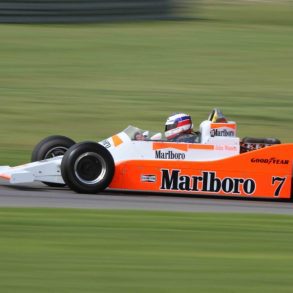
McLaren M28
Season: 1979
The first ground effect McLaren was ready late in 1978, which allowed the team to submit the M28 to extensive tests before it made its competition debut in Argentina. Despite a third place in that first racem, the M28 only served McLaren for just half a season.
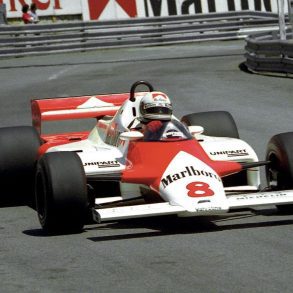
McLaren M29
Season: 1979 - 1980
McLaren went back to conventional sheet aluminium for the chassis of the M29. Its design was clearly inspired by the Williams FW07 and Ligier JS11 that had shown great speed early in 1979 season. Better than the M28 it still wasn't good enough to be truly competitive in terms of winning.
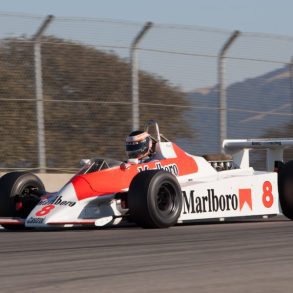
McLaren M30
Season: 1980
The McLaren M30 was raced during the 1980 Formula One season and only one example was created. The M29 had become obsolete and a new vehicle was needed. The result was the M30 which further capitalized on ground-effect design. The M30 was raced to a sixth place finish at the Dutch Grand Prix, followed by a 7th at the Italian Grand Prix.
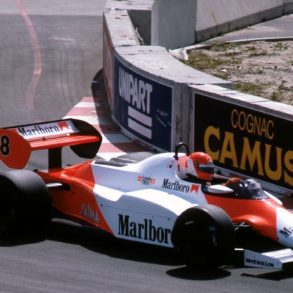
McLaren MP4/1
Season: 1981 - 1983
Groundbreaking. This was the first Formula One car to use a monocoque chassis wholly manufactured from carbon fibre composite, a concept which is now ubiquitous. The MP4 was the first car to be built following the merger of the McLaren team and Ron Dennis team. The car had several updates known as the MP4B, MP4/1C, MP4/1E
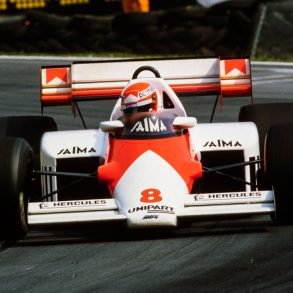
McLaren MP4/2
Season: 1984 - 1986
Everything learned from the interim MP4/1E was incorporated into the MP4/2. The car shared a lot with the MP4/1 E, but the monocoque was redesigned to accommodate the shorter engine and the larger fuel cell. An iteration of it, the MP4/2B, was used in the 1985 season, and a slightly updated version, the MP4/2C, raced in the 1986 season for McLaren.
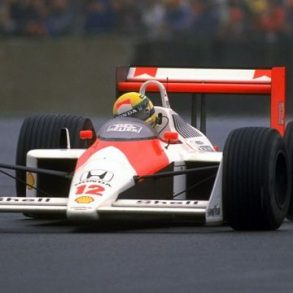
McLaren MP4/3
Season: 1987
There were three wins in 1987 with the MP4/3 by Alain Prost at Grand Prix of Brazil, Belgium, and Portugal. Stefan Johansson managed a few podium places, but he would be replaced in 1988 by Ayrton Senna. The MP4/3 represented the pinnacle of the development of the McLaren TAG-Porsche partnership.
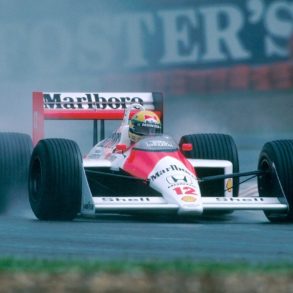
McLaren MP4/4
Season: 1988
The McLaren-Honda MP4-4, is one of the most successful Formula One car designs of all time. It competed in the 1988 Formula One season. The car was powered by Honda's RA168E 1.5 litre V6 turbo engine. The team achieved 15 pole positions to go along with the 15 wins. Only Gerhard Berger's pole position at Silverstone prevented a perfect pole record for McLaren.
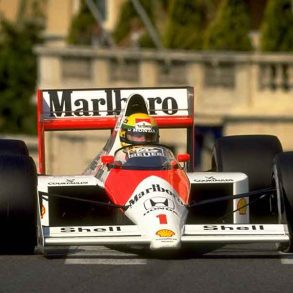
McLaren MP4/5
Season: 1989 - 1990
The MP4/5 was loosely based on its 1988 predecessor, the all-conquering MP4/4. McLaren used the new car for half of the 1989 season using the Weismann Longitudinal Transmission from the MP4/4, and the MP4/5B with the Weismann Transverse Transmission for the last half of the 1989 season and for 1990.
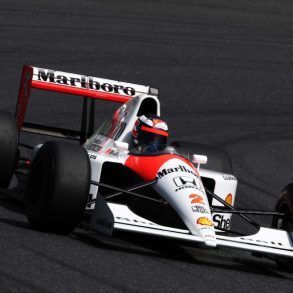
McLaren MP4/6
Season: 1991 - 1992
This was Honda's third engine configuration in just four seasons, and was an entirely new 60˚ unit with a greater piston area than the outgoing engine and a potentially higher rev limit. The car itself, whilst looking similar to MP4/5B, was quite different in terms of its aerodynamic profile. Considered the most competitive car in F1 til Williams sorted the FW14.
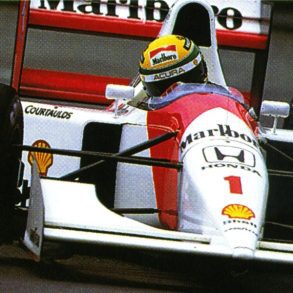
McLaren MP4/7A
Season: 1992
This was a follow-up to the successful MP4/6 from 1991. With Williams getting faster and more reliable, Mclaren was finally being tested. McLaren used the MP4/6 chassis, now designated MP4/6B for the first two races of 1992. It had semi-auto transmission and it was the last McLaren to use the Japanese engines from Honda (till 2015)
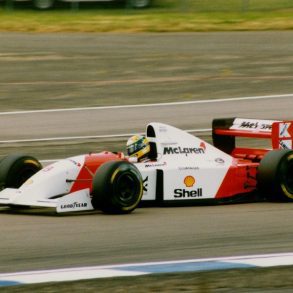
McLaren MP4/8
Season: 1993
This was a big leap in tech. Designed by Neil Oatley around advanced electronics technology, including a semi-automatic transmission, active suspension and traction control systems that were developed in conjunction with McLaren shareholder Techniques d'Avant Garde (TAG). The engine was a 3.5-litre Ford HBD7 V8 engine. It won five races with one pole.
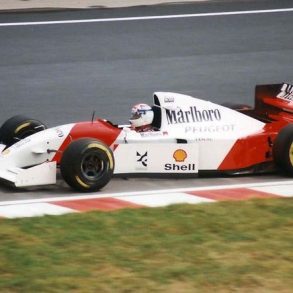
McLaren MP4/9
Season: 1994
Due to changes in regulations intended to return emphasis on driver skills, many technologies designed to aid the driver, such as active suspension, power-assisted brakes, ABS and traction control were no longer permitted. Visually the car was otherwise very similar to the preceding MP4/8. In 16 races McLaren had zero wins, zero poles and eight podiums.
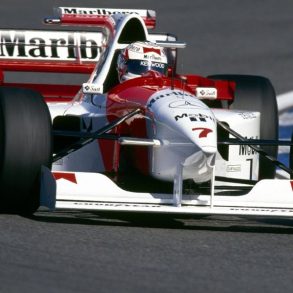
McLaren MP4/10
Season: 1995
The MP4/10 was a radical design, incorporating a high "needle"-nose design and a wing mounted atop the airbox, among other innovations. The car has a big handling problem thanks to a lack of front-end grip. Coupled with an often unreliable engine, it was not good enough to win, sitting behind Benetton, Williams and Ferrari.
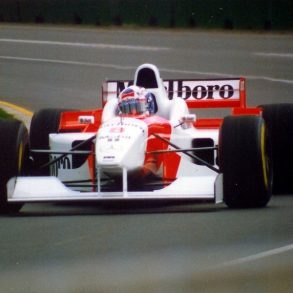
McLaren MP4/11
Season: 1996
Performance and reliability improved in 1996, but the McLaren still wasn't close enough to Williams, Ferrari and Benetton. The car was developed throughout the season, with improvements initiated to eradicate an initial handling imbalance. The changes were good enough for fourth in the constructors championship.
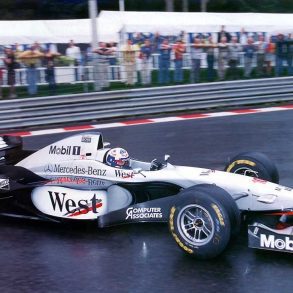
McLaren MP4/12
Season: 1997
New team colors arrived and lots of wind-tunnel testing helped McLaren improve. With a new F-spec version of the Mercedes-Benz engine, the cars were by this time enjoying a field-leading 740bhp at 16,000rpm, but even this proved insufficient to push McLaren’s tally of wins for the season beyond three.
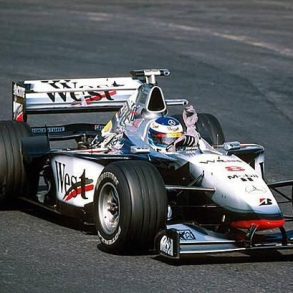
McLaren MP4/13
Season: 1998
From a base of three race wins in 1997, the team went on to win yet another Drivers‘ and Constructors‘ World Championship double, and its first with Mercedes-Benz and West. Generally the cars performed exceptionally well although DC experienced a couple of bottom-end failures at Monza and Monaco while Hakkinen’s handling went awry in Budapest.
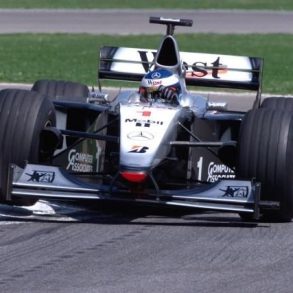
McLaren MP4/14
Season: 1999
The MP4/14 was the fastest car of the season, with aerodynamics that were even more advanced than the previous year's all-conquering MP4/13, while the Mercedes engine remained the most powerful on the grid. However, serious reliability problems, as well as errors by the drivers, meant that the Constructors' Championship was won by Ferrari.
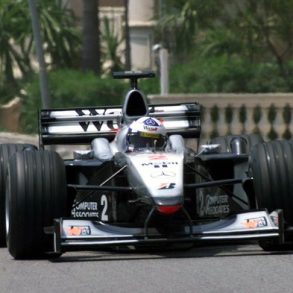
McLaren MP4/15
Season: 2000
The new MP4-15 was more an evolution than a new car, but with continual changes to the aerodynamics and a new power-steering set-up coming on stream during the season. The car proved highly competitive and scored seven victories just like its predecessor the MP4/14, but was narrowly beaten to both the championships by Ferrari F1-2000.
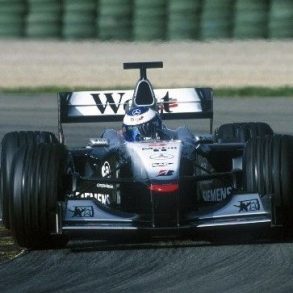
McLaren MP4-16
Season: 2001
After being narrowly pipped to both titles in 2000 by Ferrari, the aim of 2001 was to get McLaren back on top. However, the season proved to be frustrating. The team regarded themselves as fortunate to come second in the Constructors' Championship, with 102 points, ahead of the resurgent Williams team.
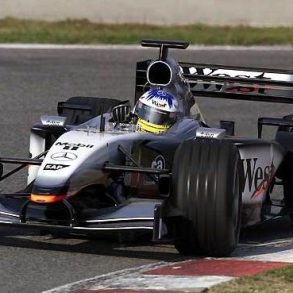
McLaren MP4-17
Season: 2002
Using a development version of the car, the MP4-17D, the 2003 season started very promisingly with wins at the first two grands prix of the year, one each for Coulthard and Räikkönen. However, rival teams soon caught up as McLaren was sidetracked by the development of the McLaren MP4-18, a new design, which had reliability problems never raced.
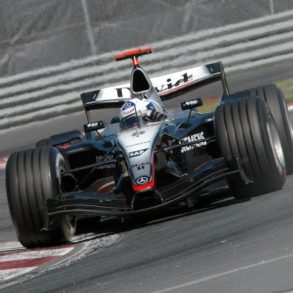
McLaren MP4-18
Season: 2003
The McLaren MP4-18 was a stillborn car. Ron Dennis decided a radical approach was needed to get back to the front. However, due to several problems during tests, the car was never raced, in favour of the McLaren MP4-17D, a highly developed version of the 2002 contender.

McLaren MP4-19
Season: 2004
McLaren said the MP4-19 was a "debugged version" of the ill-fated McLaren MP4-18. Turned out it still wasn't good enough. It was so bad that by mid-season a new car, the MP4-19B, was required, an all-new car with a radically redesigned aerodynamic package. The results were positive and gave the team hope of a better season end.
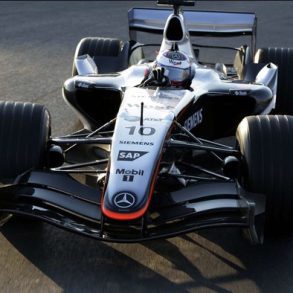
McLaren MP4-20
Season: 2005
The McLaren MP4-20 incorporated all of the lessons that had been learned, from the MP4-18 and from the two iterations of the MP4-19. Newey believed that downforce had been cut by as much as 28 per cent, the suspension geometry was also revised, and there was a new version of the Mercedes-Benz V10. Continual development made the MP4-20 the fastest car in F1 from mid-season onwards.
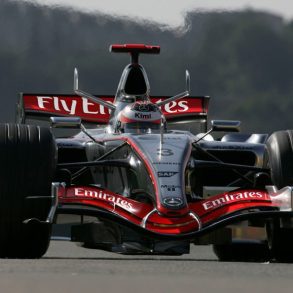
McLaren MP4-21
Season: 2006
The MP4-21 was the first McLaren car to be powered by purely Mercedes-Benz engines after 11 years partnership with Ilmor as an engine builder. Notable for its striking chrome livery with red stripes designed to maximize the visibility of the team's new primary sponsor Emirates. The distinctive needle-nose design was previously used on the MP4-19 in 2004. Zero wins.
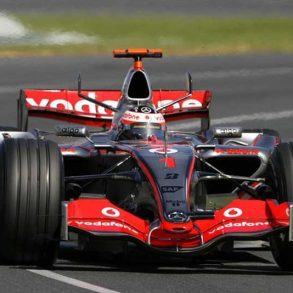
McLaren MP4-22
Season: 2007
The car proved to be one of the most competitive of the season, achieving eight victories. Internal infighting was the bigger story at McLaren. The low downforce package of the MP4-22 was extremely competitive. McLaren, with the aid of their improved car, scored as many team points in the first half of 2007 as they had done during the entire year in 2006.
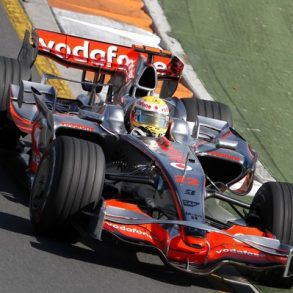
McLaren MP4-23
Season: 2008
The MP4-23 It represented a substantial evolution of the MP4-22. The latest version of the 2.4-litre, eight-cylinder Mercedes-Benz F0 108V, a 90° unit conforming to the FIA-mandated 19,000rpm. Revisions from the MP4-22 included a longer wheelbase, the removal of the "bullhorn" winglets from the airbox and a new rear wing which differed both in main profile and its endplates. It won six races.
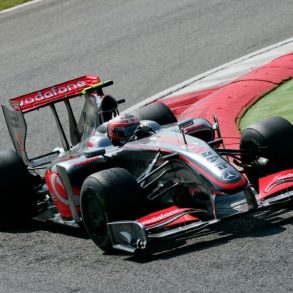
McLaren MP4-24
Season: 2009
How bad was the MP4-24? Lewis Hamilton had made public calls to scrap the car and former team owner turned commentator Eddie Jordan had proclaimed it as "possibly the worst car McLaren have ever designed". Yeah that bad. With only two wins and five podiums (thanks more to Hamilton's talent than anything else), the MP4-24 was not McLaren's best by any stretch of the imagination.
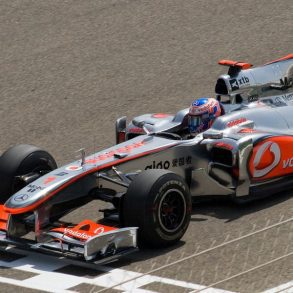
McLaren MP4-25
Season: 2010
The MP4-25 proved to be a stark improvement over the McLaren MP4-24. The most interesting part of the car was its F-duct, a small "snorkel" air scoop mounted in front of the driver that channels air through a duct in the cockpit and towards the rear of the car. Changes in the pressure in the duct reduced drag and allowing the car as much as an extra 6 mph. Wins 5 races and get 16 podiums.
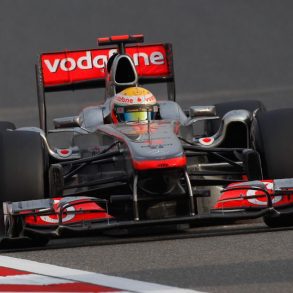
McLaren MP4-26
Season: 2011
The car was noted for its unique "L-shaped" sidepod arrangement, the aim is to clean up and better direct the airflow to the beam wing at the rear of the car, an area now even more important thanks to the ban on double diffusers. The car was competitive enough to give McLaren the 2nd place in the Constructors championship for the year.
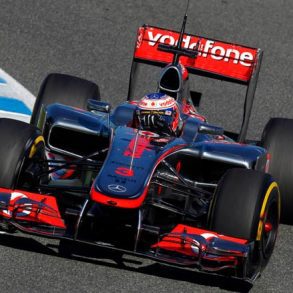
McLaren MP4-27
Season: 2012
The deep-reaching technical update for the 2012 McLaren MP4-27 showcased a natural evolution of 2011’s six-race-winning car. The 2012 chassis was substantially revised from the ground-up, with all major systems updated or re-designed for the new season. Good for seven wins and second once again in the Contructors Championship.
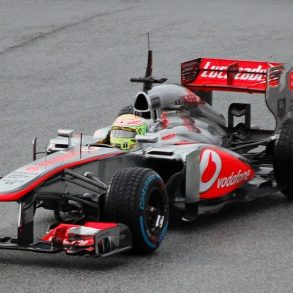
McLaren MP4-28
Season: 2013
The MP4-28 resulted in McLaren's worst Formula 1 performance for 33 years. It was their first season without finishing on the podium since 1980, and they never qualified in the top five - their worst since 1983. It was also the team's first season without a win since 2006
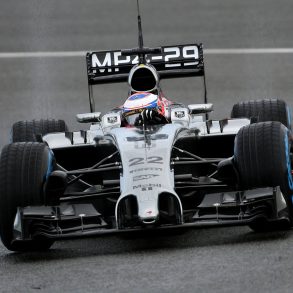
McLaren MP4-29
Season: 2014
The MP4-29 was McLaren's first turbo-powered Formula One car since the Honda engined MP4/4. After a third place finish in Australia, things went downhill. The team failed to record another podium finish all season. Fifth in the Constructors' Championship.
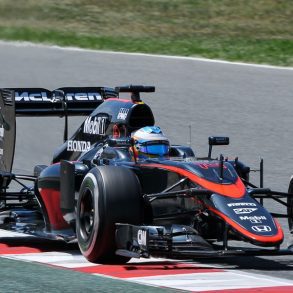
McLaren MP4-30
Season: 2015
The second Honda era was not like the first. The new Honda engine quickly proved both down on power and unreliable. The partnership scored its first world championship points at the Monaco Grand Prix, when Jenson Button finished eighth. Points were in short supply.
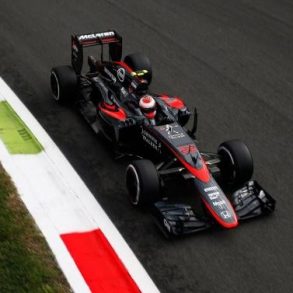
McLaren MP4-31
Season: 2016
The MP4-31 used the Honda RA616H power unit, the second engine developed by Honda since their return to the sport with McLaren in 2015. Most of the season was spent wishing and dragging the cars into Q2 for qualifying. Progress has clearly been made to the Honda.
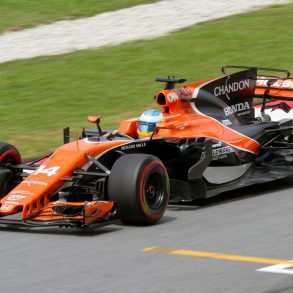
McLaren MCL32
Season: 2017
The MCL32 made its competitive début at the 2017 Australian Grand Prix. This was the last McLaren car to be fitted with a Honda engine as it was replaced by Renault engines from the 2018 season onwards. After an improvement in the previous year, 2017 was a rough season for McLaren. The cars were slow and the team's Honda engines proved to be very unreliable and slow. McLaren finished 9th in the Constructors' Championship.
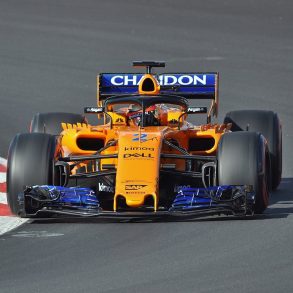
McLaren MCL33
Season: 2018
After criticising their engine supplier in the previous seasons, a switch to Renault engines in 2018 exposed issues with the McLaren chassis. The car could manage just two top 10 qualifying times throughout the season. The team finished sixth in the constructors' championship and that was only thanks to better reliability from the previous year, and the team greatly benefitted from their rivals' problems to score points from the early races.
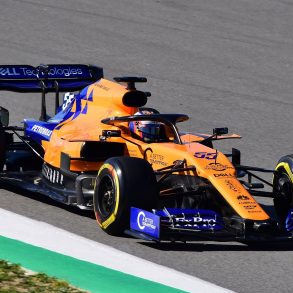
McLaren MCL34
Season: 2019
With a third place finish in the 2019 season, things are looking up for McLaren. The car is considered to be a big improvement compared to its disappointing predecessor, the MCL33, considered by many the best of the rest in qualifying and race trim behind the three leading teams: Mercedes, Ferrari and Red Bull. McLaren quickly recovered from an unlucky first few rounds to claim best of the rest with one race remaining.
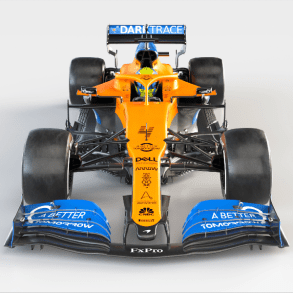
McLaren MCL35
Season: 2020
The MCL35 made its début at the 2020 Austrian Grand Prix after the start of the season was delayed by the COVID-19 pandemic. The MCL35 was driven by Carlos Sainz Jr. and Lando Norris in 2020, with McLaren finishing in third place in the World Constructors' Championship for the first time since 2012 and achieving two podiums. The same car is basically being used for the 2021 season.
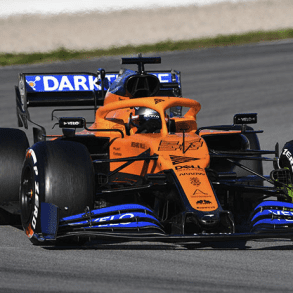
McLaren MCL35M
Season: 2021
The 2021 MCL35M, powered by a Mercedes engine, laid the groundwork with a reliable chassis but lacked the aggressive engine packaging seen on some rivals. The MCL35M struggled to consistently challenge the top teams.
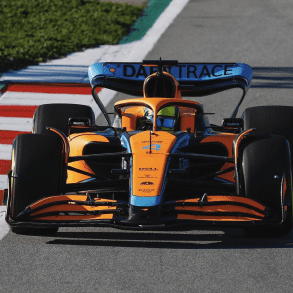
McLaren MCL36
Season: 2022
The 2022 MCL36 addressed this by adopting a revised design with a unique suspension layout, although it retained the Mercedes powerplant. The MCL36 struggled to consistently challenge the top teams.
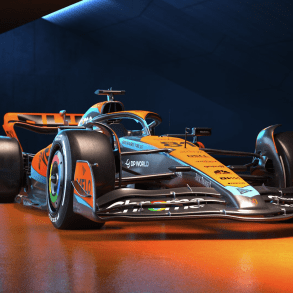
McLaren MCL60
Season: 2023
A significant shift came in 2023 with the MCL60, marking McLaren's 60th anniversary. This car aimed to propel the team back into the top four. While details are scarce, it likely featured significant aerodynamic upgrades and further refinement.
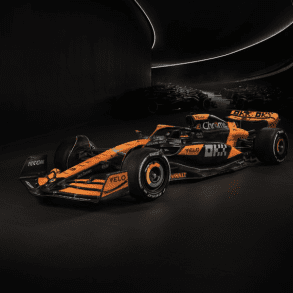
McLaren MCL38
Season: 2024
The McLaren MCL38 is a Formula One car constructed by McLaren under the direction of Rob Marshall to compete in the F1 for 2024 F1. Driven by Lando Norris and Oscar Piastri, for their 6th and 2nd seasons respectively.
McLaren Can-Am Racers
In 1966, the debut year of the Canadian American Challenge Cup series – the Can-Am for short – Bruce McLaren’s M1B sports cars were outclassed by their more powerful Lola and Chaparral opposition. In 1972 the M20s lost out in the power stakes to Roger Penske’s brutally fast turbocharged Porsches. In the intervening years, however, the Can-Am was McLaren. The orange cars from Colnbrook notched up 38 victories, while privateer cars accounted for two more. Even in that final year of eclipse the works cars won twice and a private example once, bringing the final marque tally to an incredible 43.
McLaren himself won the Can-Am title in 1967 and 1969, while team-mate Denny Hulme won it in 1968 and salvaged something from the team’s distress by taking his second title in 1970, the year in which Bruce was killed testing an M8D. When McLaren began planning a replacement for the amazingly successful M6A at the end of 1967, the Can-Am had already been dubbed ‘The Bruce and Denny Show’. In that year’s six-race series they won all but one race. If the opposition had been trampled into the dust in 1967, then they weren't going to like 1968. With the launch of the M8A McLaren was strong and in 1969 unstoppable. In an unmatched achievement, McLaren won every one of those 11 rounds. In eight the ‘orange elephants’, as the M8Bs became known were first and second.
It wasn't all celebration during these years though. On 2 June 1970, at Goodwood, McLaren was conducting routine testing in Hulme’s intended race car when a tail securing pin went missing. Wind pressure ripped away the rear bodywork and wing and, devoid of its downforce, the M8D slid broadside into a marshal’s post at well over 100 mph (161 kph). Bruce McLaren, just short of his 33rd birthday, was killed.
McLaren CanAm Car List
McLaren M1A (1964)
McLaren M1B (1966)
McLaren M1C (1967)
McLaren M6A (1967)
McLaren M6B (1968)
McLaren M8A (1968)
McLaren M8B (1969)
McLaren M8C (1968)
McLaren M8D (1970)
McLaren M8E (1971)
McLaren M8F (1971)
McLaren M20 (1972)
McLaren M8FP (1972)
McLaren LT170 (1971 - ASCC)
McLaren C8 (1971 - Not CanAm)
McLaren M12 (1968 - 1969)
McLaren M1A
Season: 1964
Building on the success of the ‘Zerex Special’, Mclaren made a production run of Group 7 racecars known as the McLaren Mark 1 or M1A. Spaceframe chassis and tuned aluminum Oldsmobile V8. Learn More
McLaren M1B
Season: 1966
In 1965, McLaren introduced the M1B for Group 7 (and later, Can-Am) competition. The M1B was an evolution of its earlier M1A, and during Can-Am’s 1966 debut season it would deliver lessons for McLaren’s later dominance. Learn More
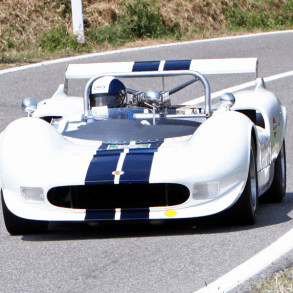
McLaren M1C
Season: 1967
The McLaren M1C was the final development of the M1 and total of 25 M1C’s were produced with most of the cars ending up in the USA or Canada for the Can-Am challenge. M1C was introduced in 1967 as a customer car. Learn More
McLaren M6A
Season: 1967
The M6A started McLaren’s dominance of Can-Am, winning five out of the six rounds in 1967. It had a monocoque chassis and aerodynamic glass-fibre body. Power was from by 6.0-litre Chevrolet V8 that produced 530bhp. Learn More
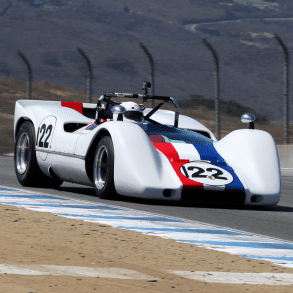
McLaren M6B
Season: 1968
Initially built with an Oldsmobile V8, it was re-engined with a more powerful Chevrolet unit for the first season of Can-Am in 1966. It was still some way off the outrageous pace of the monstrous McLaren race cars that were to come. Learn More
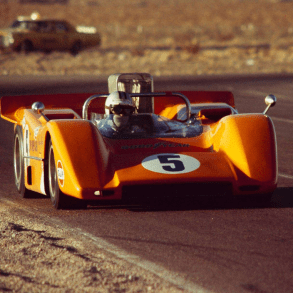
McLaren M8A
Season: 1968
The M8A was an evolution of the previous M6A design. The engine now had 7.0 litres of swept capacity, produced 620bhp and had become a stressed component within the chassis, increasing torsional stiffness and saving weight. Learn More
McLaren M8B
Season: 1969
The biggest visual difference between the M8A and M8B was the addition of the massive aerofoil wing at the back. The 1969 engine a 7.1-litre Chevrolet V8 producing 680bhp. It completely dominated the 1969 Can-Am season. Learn More
McLaren M8C
Season: 1968
The M8C was developed as a customer version of the M8A. Fifteen M8Cs were built by Trojan. They featured a more conventional chassis that did not use the engine as a stressed member. Customers chose their own engines. Learn More
McLaren M8D
Season: 1970
Bruce McLaren died in pre-season testing of the M8D. The car won nine out of 10 rounds and the entire Can-Am championship. It had the nickname ‘Batmobile’. 7.6-litre Chevrolet V8 with 680bhp. Learn More
McLaren M8E
Season: 1971
The M8E was a customer car based on the M8B and built by Trojan. The high pylon-mounted rear wings of the M8B were replaced with a lower wing to comply with the ban on high-mounted wings. Learn More
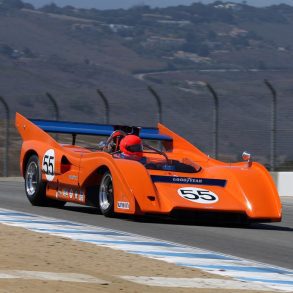
McLaren M8F
Season: 1971
Auminium V8 increased in size to well over 8 litres. Power was no 740 bhp, making the M8F the first Can-Am to break the 1000 bhp/ton. The last of McLaren’s astonishing run of winning cars. Learn More
McLaren M20
Season: 1972
Developed for the 1972 season, served as a replacement for the M8Fs, but it later became the final Can-Am created by McLaren before they left series after failing to win the 1972 championship. Learn More
McLaren M8FP
Season: 1972
The M8FP was the Trojan-built customer version of the M8F. Trojan production cars for Can-Am were M8FP models in 1972. Learn More
McLaren LT170
Season: 1971 (ASCC)
The LT170 was a hybrid of the Lola T70 and McLaren M6B Can-Am cars, and used a Chevrolet V8 engine. One car was built. This car raced part way through the 1971 Australian Sports Car Championship (ASCC). Learn More
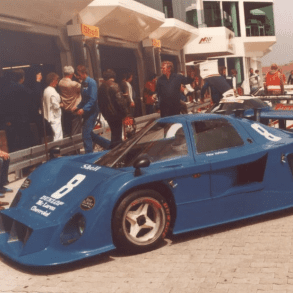
McLaren C8
Season: 1971
Starting out life as a 1972 McLaren M8F, the C8 used a 454 cu in (7,440 cc) Chevrolet V8 engine, but proved to be fragile, often retiring from races Peter Hoffmann owned the sole C8, and ran it until 1999. Learn More
McLaren M12
Season: 1968-69
The M12s were intended as McLaren’s first customer cars based on the M8As which the team had successfully used to win the 1968 Can-Am season, as well as the M8Bs which were developing for 1969. Learn More
McLaren IndyCars
McLaren first contested the United States Auto Club's (USAC) Indianapolis 500 race in 1970, encouraged by their tyre supplier Goodyear, which wanted to break competitor Firestone's stranglehold on the event. McLaren took Indianapolis by storm. McLaren's first Indy car, the McLaren M15, was due to be driven in the 1970 Indy 500 by Denny Hulme and Chris Amon, but despite Hulme showing very good early speed, he incurred serious burns in one of the cars, and neither driver started the race. Peter Revson later led the California 500, but the team's attention quickly turned to a new design. The M16 was the ultimate McLaren IndyCar, a three-time winner of Indy 500. In various guises the McLaren M16 saw frontline service as a works entry in Indycar racing for five seasons, in effect mirroring the long career of the M23, the F1 car that was a born a couple of years later. The M16 would log three Indy 500 victories over its remarkable lifetime, and as such is one of the most successful designs in the history of the race. In recent year McLaren has tip-toed back into IndyCars and more recently gone all-in. Below we take you through all their IndyCar racers over the years.
McLaren IndyCars List
McLaren M15A (1970)
McLaren M16A (1971)
McLaren M16B (1972)
McLaren M16C (1973)
McLaren M16E (1975-1976)
McLaren M24 (1977)
McLaren M24B (1978)
McLaren M29 (2017)
McLaren M29 (2019)
McLaren M29 (2020)
McLaren (2021)
McLaren (2022)
McLaren (2023)
McLaren (2024)
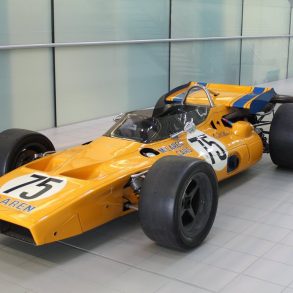
McLaren M15A
Season: 1970
McLaren's first Indy car, the McLaren M15. The car was very light by Indy standards, weighing in at 1350 lbs when first built (gained 100 lbs during development). It was the lightest cars at the 1970 Indy 500.
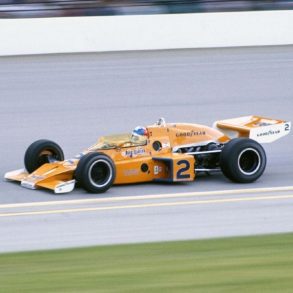
McLaren M16A
Season: 1971
This is the wedge shaped Indianapolis car for 1971 using the turbo charged Offenhauser engine and a Hewland LG500 4 speed. The Chassis is aluminium monocoque with 75 gallon fuel bags and fibreglass body.
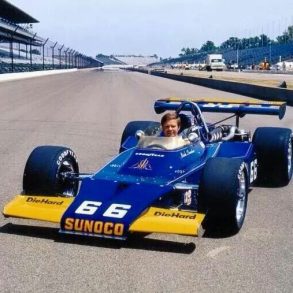
McLaren M16B
Season: 1972
1972 Indianapolis/USAC cars developed from the M16A. These cars were built at Colnbrook in the UK and campaigned by the McLaren team and the Penske team.
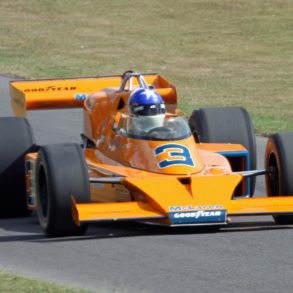
McLaren M16C
Season: 1973
The McLaren M16C was the most successful of the M16 variants, with works driver Johnny Rutherford winning eight races in M16Cs, including both the Indianapolis 500 and the Pocono 500 in 1974. It had several tweaks vs the 16B.
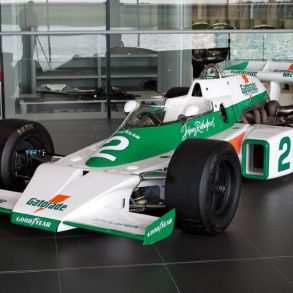
McLaren M16E
Season: 1975 - 1976
McLaren built six revised M16Cs for 1973, for works and Penske use. By now rule makers USAC had basically said that anything goes as far as wings were concerned. The M16C looked a little more like an F1 machine than the previous car.
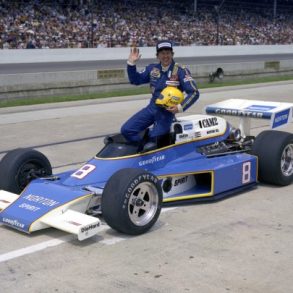
McLaren M24
Season: 1977
The M16 series had come to the end of its competitive life. It was superceded by the much more modern M24 for 1977. The M24 is basically an M23 with a turbo DFX instead of the NA DFV Cosworth. Wheels are different sizes so the suspension is modified.
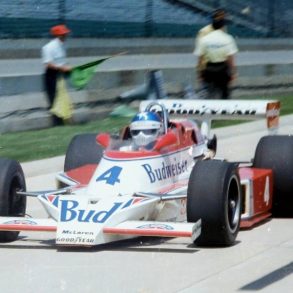
McLaren M24B
Season: 1978 - 1979
The McLaren M24B was built in 1978 and used during the 1978 and 1979 season. The 1979 CART season was marred by legal difficulties resulting from the USAC/CART split. Nevertheless, Rutherford and the M24B finished 4th in the Indy Car standings.
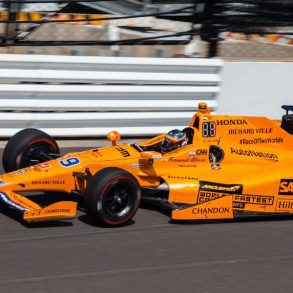
McLaren Indy (2017)
Season: 2017
Fernando Alonso and McLaren, decided to take on the 2017 Indy 500. He slowed and coasted to a smoky halt after completing 179 of the 200 laps. It was a great run, with Alonso having led 27 laps in total, between the frequent yellow flags, and he was classified 24th.
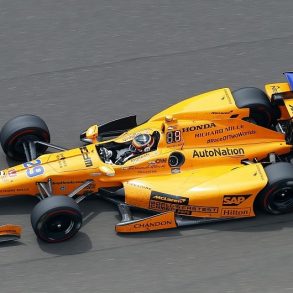
McLaren Indy (2019)
Season: 2019
McLaren's 2019 IndyCar went from a planned full-season with proven champions targeted as Fernando Alonso's team-mates, to failing to qualify for a one-off Indianapolis 500 appearance. There were lots of issues but the main one was a preoccupation by the company on improving F1 competitiveness.
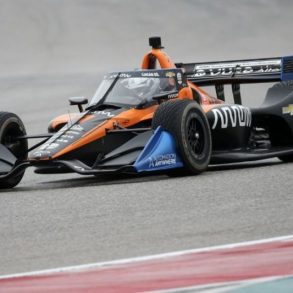
McLaren Indy (2020)
Season: 2020
McLaren Racing announced on August 1, 2019 it would join the series in 2020 in partnership with Arrow Schmidt Peterson Motorsports under the name Arrow McLaren Racing SP. It promised factory support from the iconic constructor with the tested know-how of Sam Schmidt and Ric Peterson.
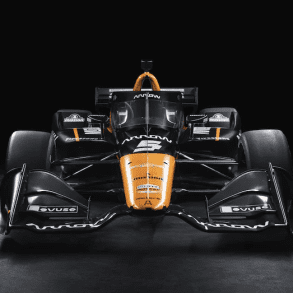
McLaren Indy (2021)
Season: 2021
In 2021, Arrow McLaren SP became the first Chevrolet powered team other than Team Penske to win an IndyCar race since 2016, when Pato O'Ward took his first IndyCar series victory at Texas Motor Speedway. This was also Schmidt Peterson's first victory since 2018 and McLaren's first open wheel racing victory since 2012.
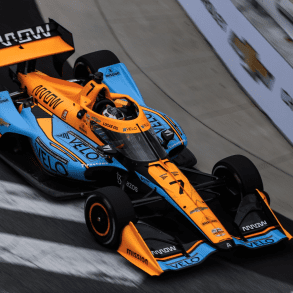
McLaren Indy (2022)
Season: 2022
For the 2022 IndyCar Series, the team's first under McLaren ownership, both O'Ward and Rosenqvist would return to the team as full time entries. The No. 6 car would again return on a part-time basis for the GMR Grand Prix and the 2022 Indianapolis 500 driven by Juan Pablo Montoya.
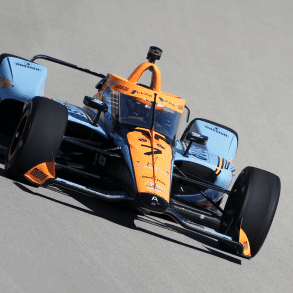
McLaren Indy (2023)
Season: 2023
I would image there is a blend of frustration and encouragement about 2023 for Arrow McLaren. There was no trip to Victory Lane, but there were numerous near misses that give a sense the organization is right on the cusp of a major breakout.
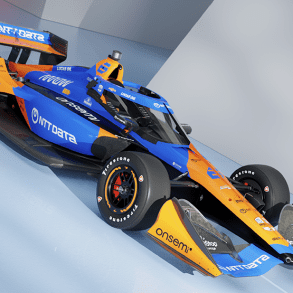
McLaren Indy (2024)
Season: 2024
For Arrow McLaren to shorten or erase the gap to Ganassi and Penske, getting back to victory lane with O’Ward and dialing up the podiums for Rossi — and resuming his winning ways — is a must. At least two of its cars have to be in the hunt wherever they race.
McLaren F1 - LeMans
McLaren is still the only manufacturer to win the world-famous endurance race on its first attempt. It happened back in 1995 and it is a crazy story about a crazy car company building the fastest car in the world and then taking it racing. When the F1 was released it did not take long for people to start asking for a racing version. The racing version of the F1 that went to Le Mans in June, the GTR, was only slightly modified from the standard road-going model. The regulations pegged its power below 600bhp, so the racer was actually slightly less powerful. The GTRs also had to be fitted with steel roll-cages, the steering rack ratios were quicker, and the rubber bushing in the suspension was removed. By any standards, that 1995 race was an epic, even going on to win the 1995 Global GT Championship.
McLaren F1 Race Cars
McLaren F1 GTR (1995 - 1997)
McLaren F1 GTR Long Tail (1997)
McLaren F1 GTR Race Car
Season: 1995 - 1997
The F1 GTR race cars that lined up on the grid at the 24 Hours of Le Mans in 1995 were essentially still no more than converted road cars. Indeed, the air restrictor regulations of the period meant the F1 GTR actually had less power than the production F1 it was based on. Yet against faster purpose-built sports prototypes, F1 GTRs finished the 1995 race in 1st, 3rd, 4th, 5th and 13th positions, an unprecedented result that made. The only manufacturer to win the famous endurance race on its first attempt.
McLaren F1 GTR Long Tail
Season: 1997
Rivals responded to the dominance of the F1 GTR with purpose-built racers that were then modified just enough to create the road-going versions needed to certify them. McLaren decided to create an F1 GT road car to homologate a race version sharing the same basic form. The racer would be the ultimate evolution of the F1 GTR. Nine F1 GTR ‘Longtail’ racers were built. The F1 GTR ‘Longtail’ took victory in five of the 11 rounds of the FIA GT Championship, and finished first and second in the GT1 class at Le Mans.
McLaren Customer Cars for Racing
McLaren has built cars that consumers can buy and race for a long time. While McLaren does indeed have its struggles in F1 at the moment there is no denying the company has real race pedigree. Most people don’t know that McLaren has a thriving business building race cars that can be purchased by individuals. These competition-honed racing cars are the best of breed and are built to win.
McLaren Customer Race Cars
McLaren MP4-12C GT3 (2011)
McLaren MP4-12C Can-Am (2012)
McLaren MP4-12C GT Sprint (2013)
McLaren P1 GTR (2015 - 2016)
McLaren P1 GTR-18 (2020)
McLaren 650S Sprint (2015)
McLaren 650S GT3 (2015)
McLaren 570S GT4 (2016)
McLaren 570S Sprint (2016)
McLaren 720S GT3 (2018)
McLaren 720S GT3X (2021-2022)
McLaren 720S GT3 EVO (2023)
McLaren Artura Trophy (2022)
McLaren Artura GT4 (2022)
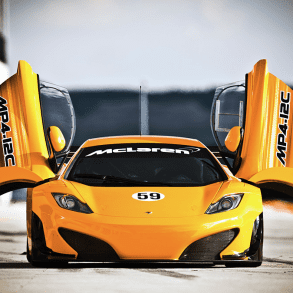
McLaren MP4-12C GT3
2011
The 2011 McLaren MP4-12C GT3 was McLaren's foray into the GT racing scene, adapted from the road-going 12C to meet the rigorous demands of competitive racing. Built in collaboration with CRS Racing, the GT3 variant was designed for high performance and durability on the track. It featured a tuned version of the standard 3.8-liter V8 engine, although slightly detuned to fit GT3 class regulations, producing around 500 horsepower.

McLaren MP4-12C Can-Am
2012
The 2012 McLaren MP4-12C Can-Am Edition was a track-only variant that paid homage to McLaren's historic success in the Can-Am series during the 1960s and 1970s. This edition was the most powerful version of the 12C lineup, boasting an uprated engine that produced 630 horsepower, making it the ultimate non-competitive, track-focused version of the 12C. Unlike the GT3, the Can-Am Edition was not bound by racing regulations.
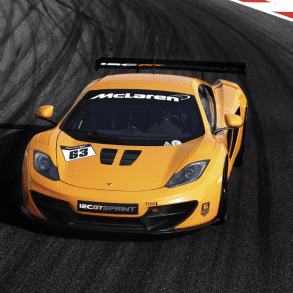
McLaren MP4-12C GT Sprint
2013
Introduced in 2013, the McLaren MP4-12C GT Sprint was designed as a bridge between the road-going 12C and its more track-focused counterparts. The GT Sprint retained the standard 12C’s 3.8-liter twin-turbo V8 engine, but it featured enhanced cooling systems and a recalibrated transmission for better performance on track days. The car was fitted with a race-prepared suspension system and Pirelli racing tires.
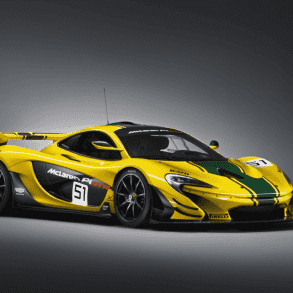
McLaren P1 GTR
2015 - 2016
The first McLaren to use the GTR moniker was the McLaren F1 GTR that won the 1995 Le Mans 24 Hours. Without road-car regulations to hold it back, the McLaren P1 GTR was an extreme track car. It was only offered for sale to P1 owners and include participation in driving events at some of the world’s most iconic circuits with specialist vehicle support. The ultimate track focused driver’s car.
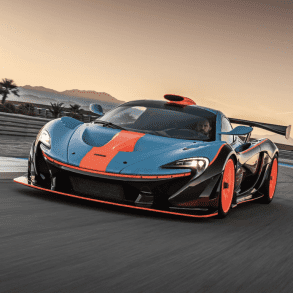
McLaren P1 GTR-18
2020
In April 2020, Lanzante Motorsport revealed that it would do six more road legal conversions of the P1 GTR. This conversion uses the same Longtail bodywork found on the P1 GT plus new rear wing, larger front splitter, and louvers for downforce.

McLaren 650S Sprint
2015
A track-oriented version of the standard 650S, specifically engineered for an enhanced racing experience without the full commitment to professional motorsport regulations that the GT3 variant adheres to. Launched to cater to the avid track day enthusiast.
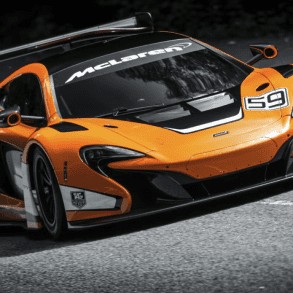
McLaren 650S GT3
2015
Introduced to compete in various GT3 category events around the world, featuring extensive modifications to meet strict racing standards. The 650S GT3 boasts a significantly revised aerodynamic package, including a large rear wing, a prominent front splitter.
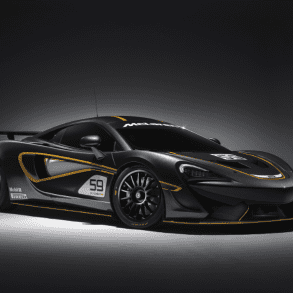
McLaren 570S GT4
2016
The McLaren 570S GT4 is a race-ready version of the standard 570S, specifically designed to meet the stringent specifications of GT4-category racing. Introduced to cater to both amateur and professional racers, is equipped with competition-oriented modifications.
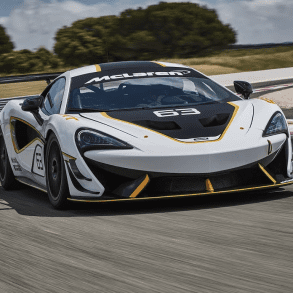
McLaren 570S Sprint
2016
The McLaren 570S Sprint, while also a track-focused variant of the 570S, is positioned differently compared to the GT4, as it is not homologated for any specific racing series. This allows for more freedom in terms of performance enhancements and customization. The Sprint is designed primarily for private track use.
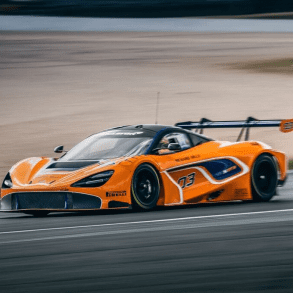
McLaren 720S GT3
2018
The 720S GT3 elevates the extreme performance of the Super Series model to world-class track pace – accessible to professional and amateur drivers alike. The latest GT3 challenger is undergoing an intensive track testing programme throughout 2018, and will compete with customer teams at demanding GT races.
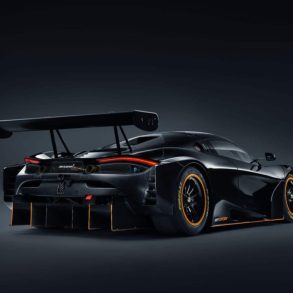
McLaren 720S GT3X
2021 - 2022
This otherworldly creation is a track-only car based on the 720S GT3. However, it isn't homologated for racing. That means McLaren were not bound by restrictions and were able to wring out every ounce of performance from the 720S GT3X. It is not eligible for the GT3 racing series but McLaren will still build one.
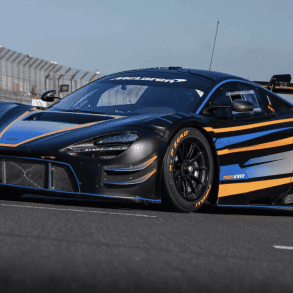
McLaren 720S GT3 EVO
2023
In 2023, McLaren launched an EVO for the 720S GT3. The EVO saw improvements made on aerodynamics and suspension, aimed at improving the car's handling in traffic. The car was available to be purchased brand new, or as an upgrade kit for existing 720S GT3 cars. The perfect track day weapon?
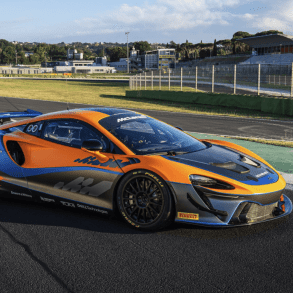
McLaren Artura Trophy
2022
The McLaren Artura Trophy is a track-focused evolution of the Artura, designed for customer racing series. It features unleashed power from the V6 without hybrid system restrictions, a stripped-down interior, and aggressive aerodynamic upgrades for maximum performance on the circuit.
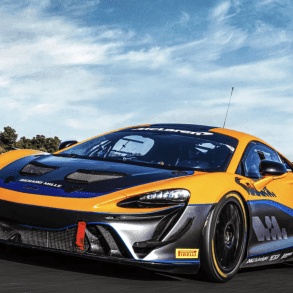
McLaren Artura GT4
2022
The McLaren Artura GT4 adheres to strict GT4 racing regulations. While it shares the Artura's core technology and design, it maintains a closer similarity to the road car for balance of performance with other GT4 competitors. Key differences include less extreme aero, power tuned to regulations.

Best McLaren Race Cars Ever Created
We Pick The Nine Greatest McLaren Race Cars In History
McLaren's storied history in motorsport is a rich tapestry woven with innovation, determination, and triumph. From its inception in 1963, founded by the visionary racer Bruce McLaren, the brand has evolved into a synonym for racing excellence. Known for pushing the boundaries of what's technically possible, McLaren has etched its name into the annals of racing history, claiming victories in some of the most prestigious motorsport events worldwide. This section aims to spotlight the best McLaren racing cars ever made, machines that not only dominated the tracks but also demonstrated groundbreaking advancements in automotive technology. McLaren's foray into Formula One, the pinnacle of motorsport, has been particularly distinguished. The team boasts an enviable record of over 180 race wins, 12 drivers' championships, and 8 constructors' championships, making it one of the most successful teams in the history of the sport. Beyond Formula One, McLaren's prowess extends to the Can-Am series, where they were almost unbeatable in the late 1960s and early 1970s, and to the legendary 24 Hours of Le Mans, which they won outright in 1995 with the McLaren F1 GTR. With that, lets move onto the good stuff and give you our take on the best McLaren race cars ever created.
1. 1988 McLaren MP4/4
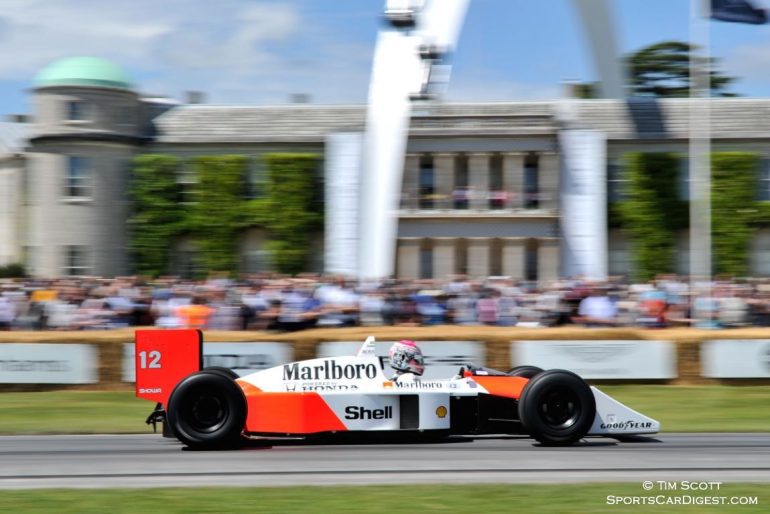
Why Is This The Best McLaren Race Car?
The 1988 McLaren MP4/4 is heralded as one of the greatest race cars in the history of Formula One. Engineered to perfection and dominating the 1988 season, this car not only epitomized McLaren's relentless pursuit of excellence. It has a winning record that stands almost unchallenged.
Designed by Steve Nichols, with input from Gordon Murray, the car featured a low and sleek design that was radically different from its predecessors. The MP4/4's design was complemented by its Honda RA168E 1.5-liter V6 turbocharged engine, which was capable of producing over 650 horsepower in race trim and up to 1,000 horsepower in qualifying setup. One of the key innovations of the MP4/4 was its carbon fibre monocoque construction and the integration of the engine and chassis so seamless that it created a perfect balance, allowing for exceptional handling characteristics.
The statistics of the MP4/4 speak volumes about its dominance. Piloted by Ayrton Senna and Alain Prost, two of the most formidable drivers in Formula One history, the car won an astonishing 15 out of the 16 races in the 1988 season. Senna won his first World Championship, contributing eight victories, while Prost won seven races. Their synergy with the MP4/4 allowed McLaren to secure the Constructors' Championship with a record-breaking 199 points, 134 points ahead of their closest competitor, Ferrari. It set a record for the highest win percentage in a single season, a staggering 93.75%, a record that remains unbeaten.
2. 1995 McLaren F1 GTR
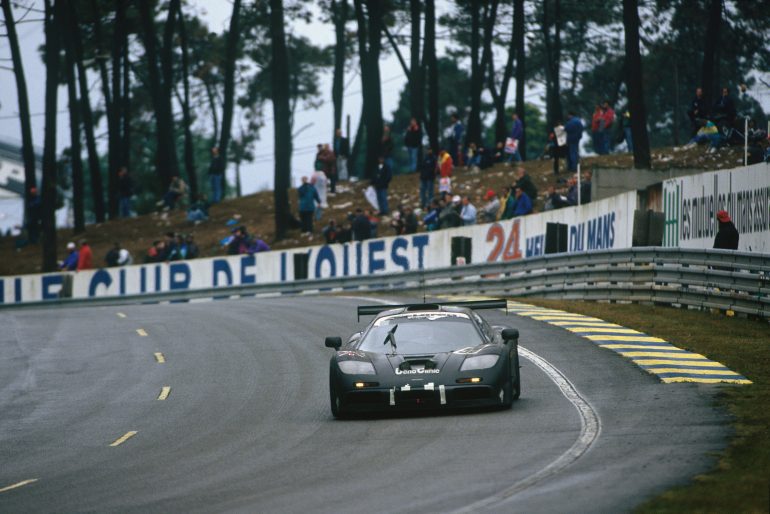
Why Is This The Best McLaren Race Car?
The 1995 McLaren F1 GTR etched its name into motorsport history by achieving a stunning victory at the 24 Hours of Le Mans. Originally designed as a supercar for the road, the F1's transition into a competitive race car led to the creation of the GTR version.
When adapting the F1 for racing, McLaren made significant modifications to meet the regulations of the BPR Global GT Series, the category under which it would compete at Le Mans. The F1 GTR was equipped with a more robust aerodynamic package, including a large rear wing, diffuser, and front splitter to enhance downforce and stability at high speeds.
Under the hood, the F1 GTR retained the naturally aspirated 6.1-liter V12 engine designed by BMW, which delivered around 600 horsepower. This was slightly detuned from the road version for reliability over long race durations but still provided phenomenal performance. Notably, the GTR's modifications were focused on maximizing the existing potential of the F1 platform, rather than reengineering from the ground up, demonstrating McLaren's confidence in the original design.
The 1995 McLaren F1 GTR's debut at Le Mans was nothing short of spectacular. Entered by several teams with support from McLaren, the F1 GTRs faced off against purpose-built race cars from established manufacturers. Despite the odds, the McLaren F1 GTR achieved an astounding overall win and placed 4th, 5th, and 13th, dominating the field with superior reliability and speed. This victory was particularly remarkable because it was the first time a race-prepped version of a production car won Le Mans since the early 1970s.
The GTR's success continued beyond Le Mans, proving its capabilities in various conditions and circuits around the world in the BPR series. Its performance helped McLaren establish a new benchmark for what a supercar could achieve both on the road and the track, blending speed, technology, and reliability in ways that had rarely been seen before in racing.
3. 1970 McLaren M8D
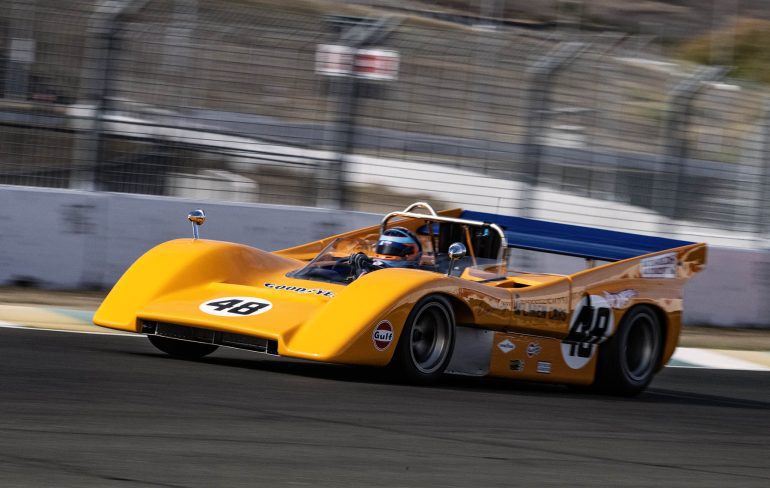
Why Is This The Best McLaren Race Car?
The 1970 McLaren M8D stands as a monumental figure in within the Can-Am series, a category renowned for its minimal restrictions and maximum speed. The M8D not only exemplified McLaren's innovative engineering and design prowess but also dominated the racing season, underscoring the brand's dominance in one of the most competitive series of the era.
The McLaren M8D was the latest evolution in the McLaren M8 series, designed to comply with the new regulations that banned the high-mounted wings used in the previous season. This led to a significant redesign of the aerodynamics. The M8D featured a wider, lower, and more integrated wing, built into the bodywork to provide downforce without the previous high-mount wings' instability issues. The chassis was a robust aluminum monocoque, providing increased strength and rigidity.
Powered by a Chevrolet V8 engine, the M8D was capable of producing over 680 horsepower, a staggering figure for its time. The engine was paired with advanced aerodynamics and a lightweight construction, allowing the M8D to achieve incredible speeds with remarkable agility and control. The distinctive 'batmobile' bodywork not only added to its aerodynamic efficiency but also gave it a menacing aesthetic that became iconic in Can-Am history.
The McLaren M8D made an indelible mark on the 1970 Can-Am season. Piloted by Denny Hulme and Peter Gethin, the car won 9 out of the 10 races that season. Tragically, the season was also marked by the death of Bruce McLaren himself, who died testing the M8D at Goodwood. Despite this profound loss, the team rallied to honor their founder's memory, dominating the season in what could be seen as a fitting tribute to McLaren's vision and tenacity.
4. 1969 McLaren M12
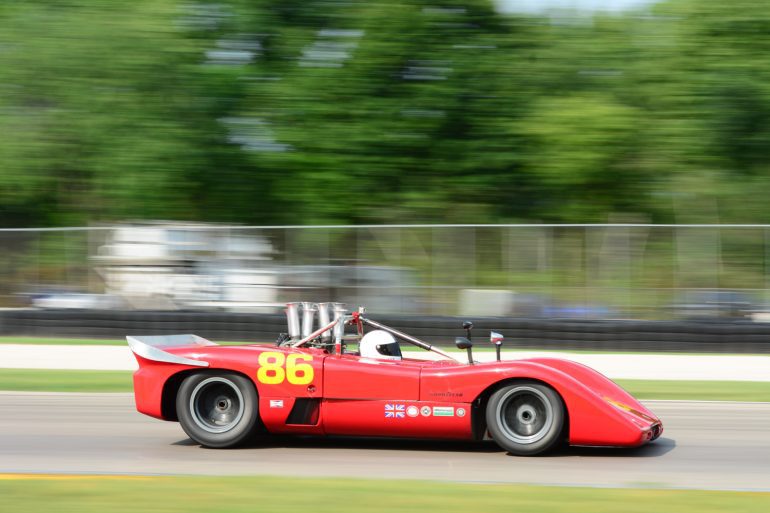
Why Is This The Best McLaren Race Car?
The 1969 McLaren M12 emerged during a transformative period in motorsport. As one of the greatest McLaren race cars, the M12 combined simplicity, accessibility, and formidable power, creating a lasting impact in the world of sports car racing.
The McLaren M12 was essentially a customer version of its more famous predecessors, the M6 series. Designed to be sold to private teams and drivers, it allowed McLaren's cutting-edge technology and design philosophy to reach a wider audience, democratizing the high levels of performance traditionally reserved for top-tier professional teams. The M12 featured a monocoque chassis that was robust and lightweight, derived directly from the successful M6A and M6B models. This chassis technology provided exceptional rigidity and safety for its time, setting a standard for the construction of race cars.
The M12 was equipped with a powerful Chevrolet V8 engine, common among Can-Am cars of that era. This engine choice was known for its reliability and high power output, essential traits for the grueling races of the Can-Am series. The car's bodywork was streamlined for optimal aerodynamics, yet it retained a level of simplicity that made it manageable for non-factory teams to maintain and race effectively.
On the track, the McLaren M12 was a formidable competitor. Though it did not achieve the same level of dominance as some of its factory-backed McLaren siblings, the M12's performances in the hands of privateers were impressive and showcased its capabilities. Its ability to compete at high levels allowed smaller teams to challenge more established competitors, reinforcing McLaren’s reputation as a builder of accessible, high-performance racing cars.
The true value of the M12, however, lay in its role as a catalyst for broader participation in motorsport. By providing private teams access to technology that could compete on equal footing with the leading cars of the era, McLaren helped foster a more competitive and diverse racing landscape.
5. 1973 McLaren M23
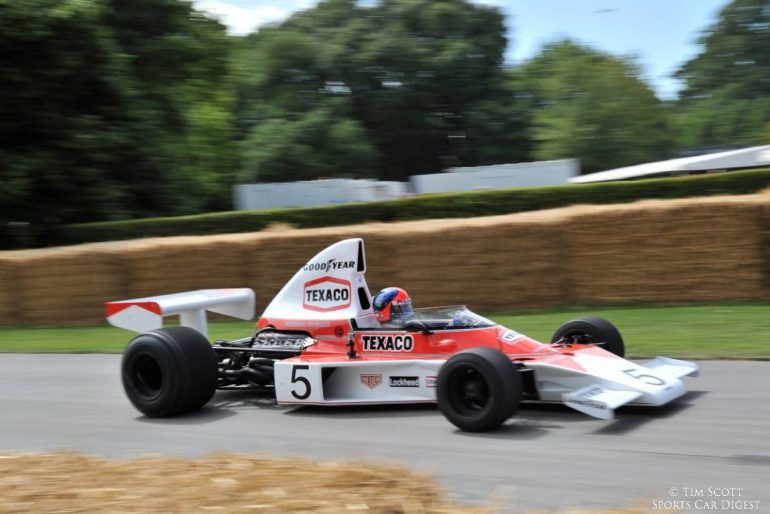
Why Is This The Best McLaren Race Car?
The 1973 McLaren M23 is one of the most iconic and successful Formula One cars ever produced by McLaren. It represented a significant evolution in the design and engineering capabilities of McLaren, setting new standards in performance and reliability. The M23's career spanned several seasons, accumulating victories and championships, and cementing its place as a legend in the annals of Formula One history.
The McLaren M23 was born out of the necessity to keep up with the rapid technological advancements in Formula One during the early 1970s. Designed by Gordon Coppuck, it featured a monocoque chassis made from sheet aluminum alloy, which was both strong and light. This construction method provided a more rigid and safer structure for drivers, a significant improvement over the spaceframe designs used in earlier models.
One of the defining features of the M23 was its sophisticated aerodynamics, which included a full-width front wing and a neatly integrated rear wing. These elements were adjustable, allowing for fine-tuning based on race conditions and circuits, giving McLaren drivers an edge in handling and speed. The car was powered by the Ford Cosworth DFV engine, the de facto power unit for many teams during that era, known for its reliability and powerful output. This engine was paired with a Hewland five-speed gearbox, another standard of excellence in the sport at the time.
The M23 made its debut in 1973 and quickly demonstrated its competitiveness. Over its lifespan, it was driven by some of the most notable drivers in Formula One, including Emerson Fittipaldi, James Hunt, and Jochen Mass. Fittipaldi won the World Championship in 1974 in the M23, a testament to its design and capabilities. The car continued to be competitive through the 1976 season, notably helping James Hunt to secure his only World Championship in a dramatic showdown against Niki Lauda.
Throughout its career, the M23 won a total of 16 Grand Prix races, a remarkable achievement that helped establish McLaren as a powerhouse in Formula One.
6. 1998 McLaren MP4/13
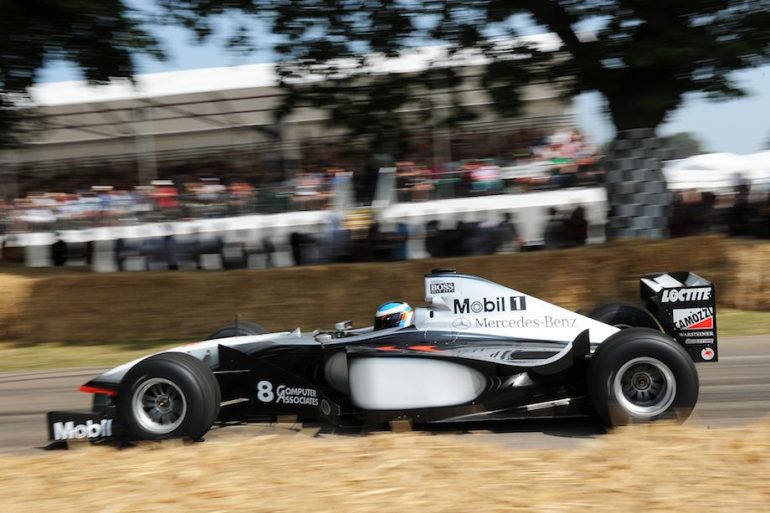
Why Is This The Best McLaren Race Car?
The 1998 McLaren MP4/13 is widely regarded as one of the greatest McLaren race cars ever built, marking a period of resurgence for McLaren in the Formula One World Championships. After a few years of competitive drought, the MP4/13 revived McLaren's fortunes in one of the most dominant seasons in Formula One history.
The 1998 season introduced sweeping changes in Formula One regulations, primarily aimed at reducing speeds and increasing safety. These changes included narrower cars and grooved tires instead of the slick tires that had been used previously.
Designed by Adrian Newey, the MP4/13 featured a more compact design with a shorter wheelbase and was powered by the Mercedes-Benz FO 110G V10 engine, which was both powerful and reliable, producing around 780 horsepower. This engine was key to achieving the high speeds necessary for winning races, even with the new regulations that generally slowed cars down. Aerodynamics played a crucial role in the design of the MP4/13. Newey's work ensured that the car maintained optimal downforce and minimized drag within the new constraints.
The effectiveness of the MP4/13 was evident from the outset, with the car winning the season opener in Australia. Mika Häkkinen and David Coulthard, who drove for McLaren that season, benefitted from the car's superior design and performance. Häkkinen, in particular, used the MP4/13 to clinch his first World Driver's Championship, winning eight of the sixteen races in the 1998 season. McLaren also secured the Constructor's Championship, marking a significant triumph for the team.
7. 1984 - 1986 McLaren MP4/2
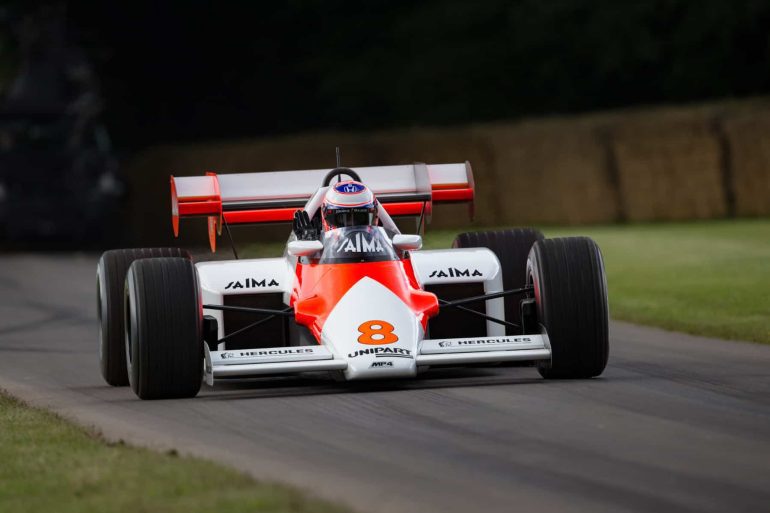
Why Is This The Best McLaren Race Car?
The McLaren MP4/2, raced from 1984 through 1986, not only solidified McLaren's status as a dominant force in Formula One but also showcased the team's technical brilliance during the fiercely competitive turbocharged era. The MP4/2 helped McLaren secure two Constructors' Championships and three Drivers' Championships in just three seasons.
Developed by John Barnard, the MP4/2 was designed to excel in the turbo era, which was defined by extreme power outputs and complex handling dynamics due to the powerful turbocharged engines. The car featured a carbon fibre monocoque chassis, a pioneering technology at the time, which offered superior strength and reduced weight compared to traditional aluminum constructions.
The MP4/2 was powered by a TAG-Porsche 1.5-liter V6 turbo engine, which was capable of producing upwards of 800 horsepower in race trim and over 1,000 horsepower in qualifying setup. This immense power was managed through sophisticated fuel injection and turbocharging technologies, making the MP4/2 not only fast but also relatively fuel-efficient—an essential attribute under the fuel restrictions introduced during that period.
The MP4/2's competitive debut in 1984 was nothing short of spectacular. Niki Lauda and Alain Prost were behind the wheel. Lauda won the Drivers' Championship in 1984 by just half a point over his teammate Prost—the closest margin in the history of the sport. The car won 12 out of the 16 races that season.
In 1985, the MP4/2 continued its dominance with Alain Prost winning his first Drivers' Championship. McLaren also clinched the Constructors' Championship again. The 1986 season saw Prost winning his second consecutive championship.
8. 1967 McLaren M6A
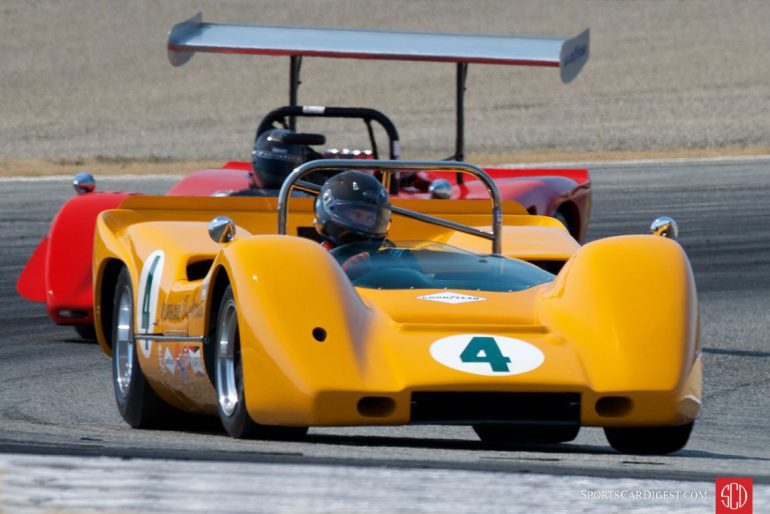
Why Is This The Best McLaren Race Car?
This car not only represented a significant leap forward in terms of design and performance but also set the stage for McLaren's dominance in Can-am.
The McLaren M6A was designed with a singular goal: to conquer the Canadian-American Challenge Cup (Can-Am). Bruce McLaren and his team developed the M6A with an emphasis on both aerodynamics and chassis engineering, introducing innovations like a monocoque chassis made from aluminum, a first.
The debut of the M6A in the 1967 Can-Am season was spectacular. Bruce McLaren and his teammate, Denny Hulme, drove the car to overwhelming success. The M6A's performance was dominant from the start, with McLaren himself winning the first race of the season.
Over the course of the series, the M6A helped the team secure multiple victories, leading Bruce McLaren to clinch the drivers' championship and establishing the team as a formidable force in the series.
9. 2008 McLaren MP4-23
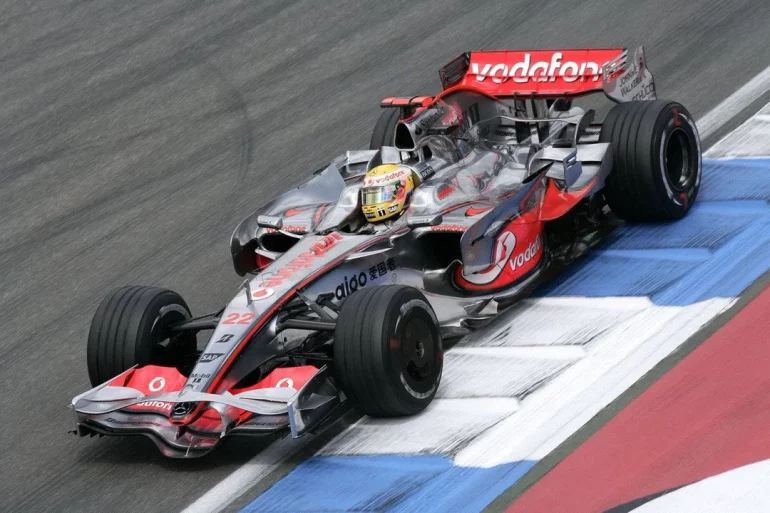
Why Is This The Best McLaren Race Car?
The McLaren MP4-23 was aimed at addressing the shortcomings of its predecessor, the MP4-22. Introduced at a time when Formula One regulations were stable, allowing teams to focus on optimizing performance rather than adapting to rule changes, the MP4-23 showcased several innovative features. The MP4-23 was powered by a Mercedes-Benz FO 108V 2.4 liter V8 engine, known for its reliability and strong power output.
The 2008 Formula One season is remembered for its intensity and the nail-biting finish to the championship. Lewis Hamilton and Felipe Massa were the main contenders, with the title fight going down to the last corner of the last lap in the final race at Brazil. Hamilton’s performance in the MP4-23 throughout the season was a blend of raw speed and strategic racing, exemplified by his crucial overtakes and ability to maintain composure under pressure.
Hamilton won five races over the course of the season, but it was his consistency and ability to secure vital points in other races that kept him in contention. The MP4-23’s performance was pivotal in these moments, providing the necessary competitiveness to battle at the front of the pack consistently.


